Cleaner Air Partnership Ready to Respond to Shifts at Federal Level

by Gretchen Bennitt, Yolo-Solano AQMD & Debbie Wells, CEMEX (Co-Chairs of the Cleaner Air Partnership)
The longstanding Cleaner Air Partnership (CAP), the premier public-private coalition focused on improving air quality in California’s Capital Region, is ready to adjust to the changes in Federal policy and funding dynamics brought on by the Trump Administration. This partnership is unlike any other in the state – where air quality regulators, industry, and the nonprofit sector work together on air quality issues of common concern, for the benefit of all. From the statehouse to the U.S. Capitol, we are consistently told that our innovative model for collaboration is something that people haven’t seen before – breaking barriers and enabling progress. This approach is needed now more than ever.
CAP has accomplished much over the years, from (1) reducing pollution impacts from the San Francisco Bay Area by catalyzing their adherence to Smog Check II, (2) establishing support for SMAQMD to create and implement Check Before You Burn policies that became the national standard for particulate control, (3) securing Capital Region representation on the CA Air Resources Board, and (4) successfully advocating for South Sacramento’s designation as an AB 617 Community Air Protection community for targeted air quality investments and incentives. In all of these cases, business, government, and the community came out ahead. Good air quality is good for business.
Reframing Our Priorities:
The new Federal Administration has clearly emphasized investment in business and industry. Considering CAP’s longtime focus on incentives for cleaner vehicles, equipment, and more to transition toward lower environmental impact, we see an opportunity to look for some common ground. One of our approaches for engagement with newly minted Federal leaders will focus on preserving consumer choice, and is expected to serve as a role model for other areas of the nation and state. One vital CAP role will be to help educate leaders about potential regional impacts and opportunities related to changing regulatory landscapes. At the same time – while priorities are changing, we know that we still have overburdened communities with a disproportionate amount of air pollution and related health impacts that need to be addressed.
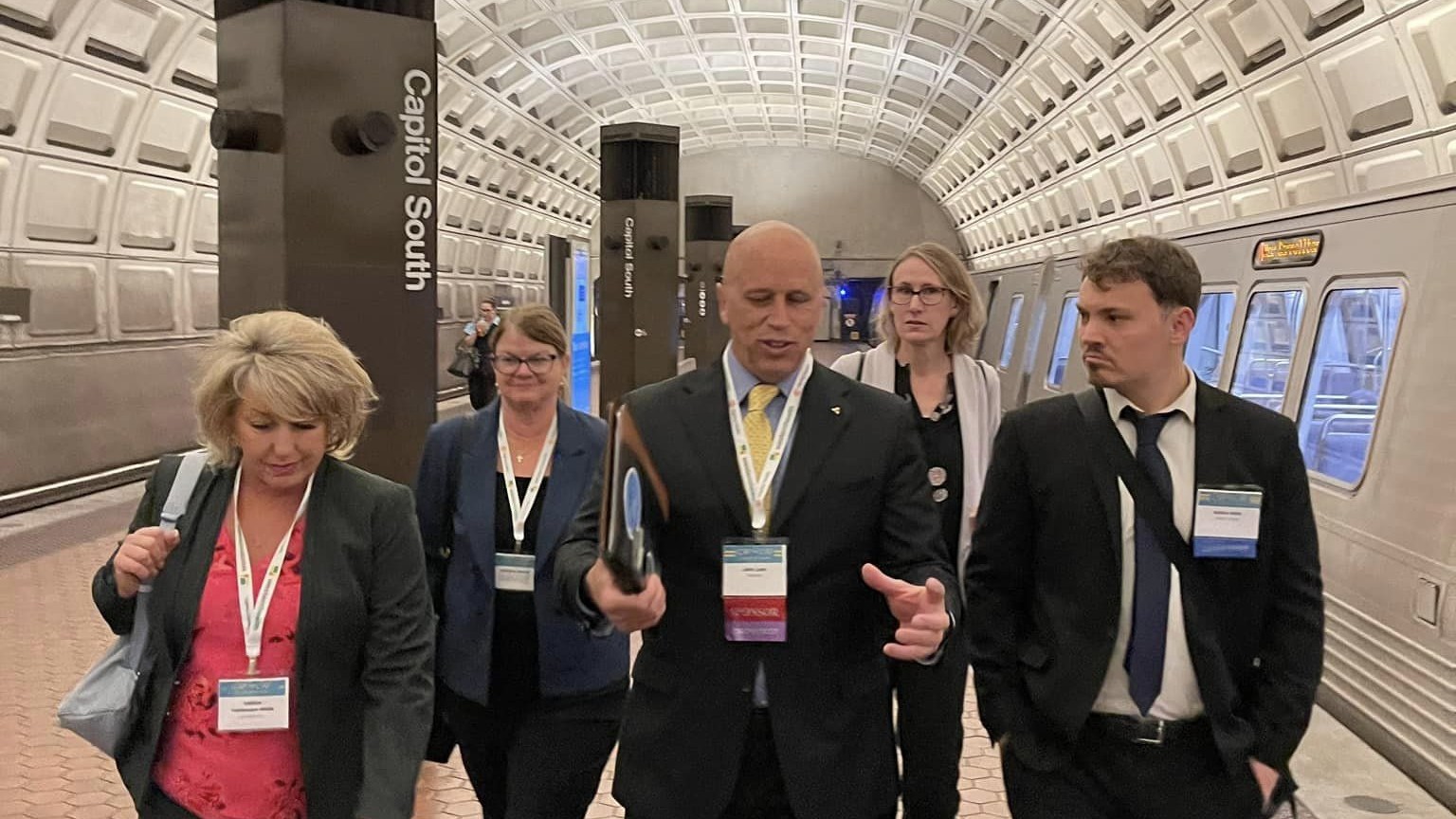
The Cleaner Air Partnership is currently gearing up to take part in the Sacramento Metropolitan Chamber of Commerce’s “Capitol-to-Capitol” program, which will bring 400 regional leaders to Washington, D.C. in May 2025 to advocate for our region’s Federal policy and funding priorities. Each year, CAP helps to lead two of the thirteen issue-focused teams – ‘Air Quality’ and ‘Wildfire & Forest Management.’ New leadership means a new way of talking about our priorities – something we’re taking very seriously as we build out a gameplan for this year’s program. For example, adequate staffing levels at Federal agencies help government be responsive to business needs. Investing in American-made battery storage and grid resilience supports energy independence. And biomass-to-energy solutions prevent wildfires and support rural jobs. This reframing will be critical to relationship-building in D.C. and getting things done for our communities.
Attaining Air Quality Goals:
Since 1986, this collaborative of air quality regulators, industry, public health organizations, and nonprofits have successfully weathered seven Presidents, multiple economic downturns, and big changes to technology while continuously advocating for cleaner air. In fact – we are pleased to share the news that the Sacramento Federal Nonattainment Area is expecting to demonstrate attainment of the 2008 National Ambient Air Quality Standard for Ozone in 2024! We will also continue working with U.S. EPA, CARB, air districts, and our regulated community towards attaining the 2015 Federal Ozone Standard. Local air quality regulators work hard to meet and maintain Federal air quality health standards by adopting and enforcing air quality programs, maintaining air monitoring networks, and administering federal, state and local air quality grant programs. Attainment of the 2008 ozone standard is a huge milestone that has been decades in the making, and speaks to the progress that we can make when diverse partners come together around a common mission.
The Cleaner Air Partnership looks forward to continuing our important work – to make progress on public health and economic growth through improvements in air quality now and into the future.
The Cleaner Air Partnership a unique public-private partnership across business, transportation, the environment, health, and local government that promotes cleaner air in the Sacramento region. Originally founded in 1986 by Breathe California of Sacramento-Emigrant Trails and the Sacramento Metropolitan Chamber of Commerce, and later joined by Valley Vision, the Cleaner Air Partnership’s purpose is to protect our health and promote economic growth by supporting green industry, smart land use, and leading-edge research while lowering emissions. The Partnership is led by two co-equal co-leads from the public and private sectors, respectively.
The Yolo-Solano Air Quality Management District’s mission is to protect human health and property from the harmful effects of air pollution. As a public health agency, the District is responsible for safeguarding air quality and overseeing air pollution control in Yolo and northeastern Solano counties. For more information, visit www.ysaqmd.org.
Cemex is a global building materials company committed to providing innovative and sustainable solutions for the construction industry. Cemex has set an ambitious goal to become a net-zero CO2 company by 2050, striving to make sustainability a part of its everyday decision-making processes. For more information, visit www.cemex.com.
Event Recap – Southwest Regional Food Business Center Virtual All-Partner Summit
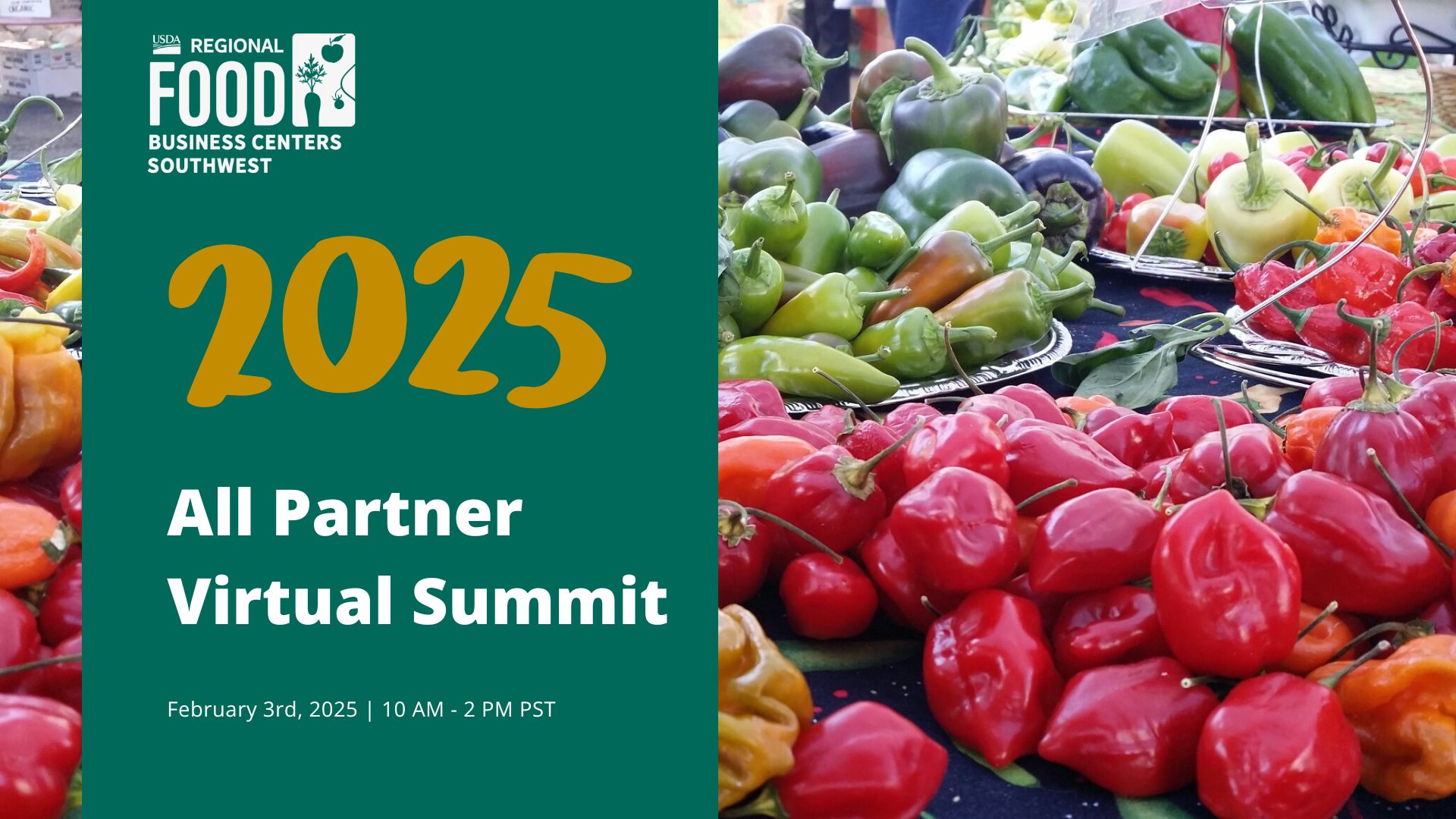
On February 3rd, partners of the USDA’s Southwest Regional Food Business Center gathered together for the Center’s first Virtual Summit. With over 70 participants from across California, Arizona, Nevada, and Utah, the Summit provided a forum for partners to join together, foster new connections, and build upon existing relationships in the Southwest Center community. Intermixed with networking opportunities, guest speakers presented on topics ranging from Institutional Procurement/Farm to Hospital, Bridge Lending and Farm Financing, Invigorating the Regional Network, and Best Practices in Center Communications.
Connecting with Center Partners & Learning Together
The Summit kicked off with an interactive wordcloud activity in which Partners described their work with one word. Words such as “Resilient, Impact, and Inspiring” exemplified the commitment to supporting local farmers and food systems, and helped set the stage for a Summit focused on empowering and supporting Southwest Center partners.
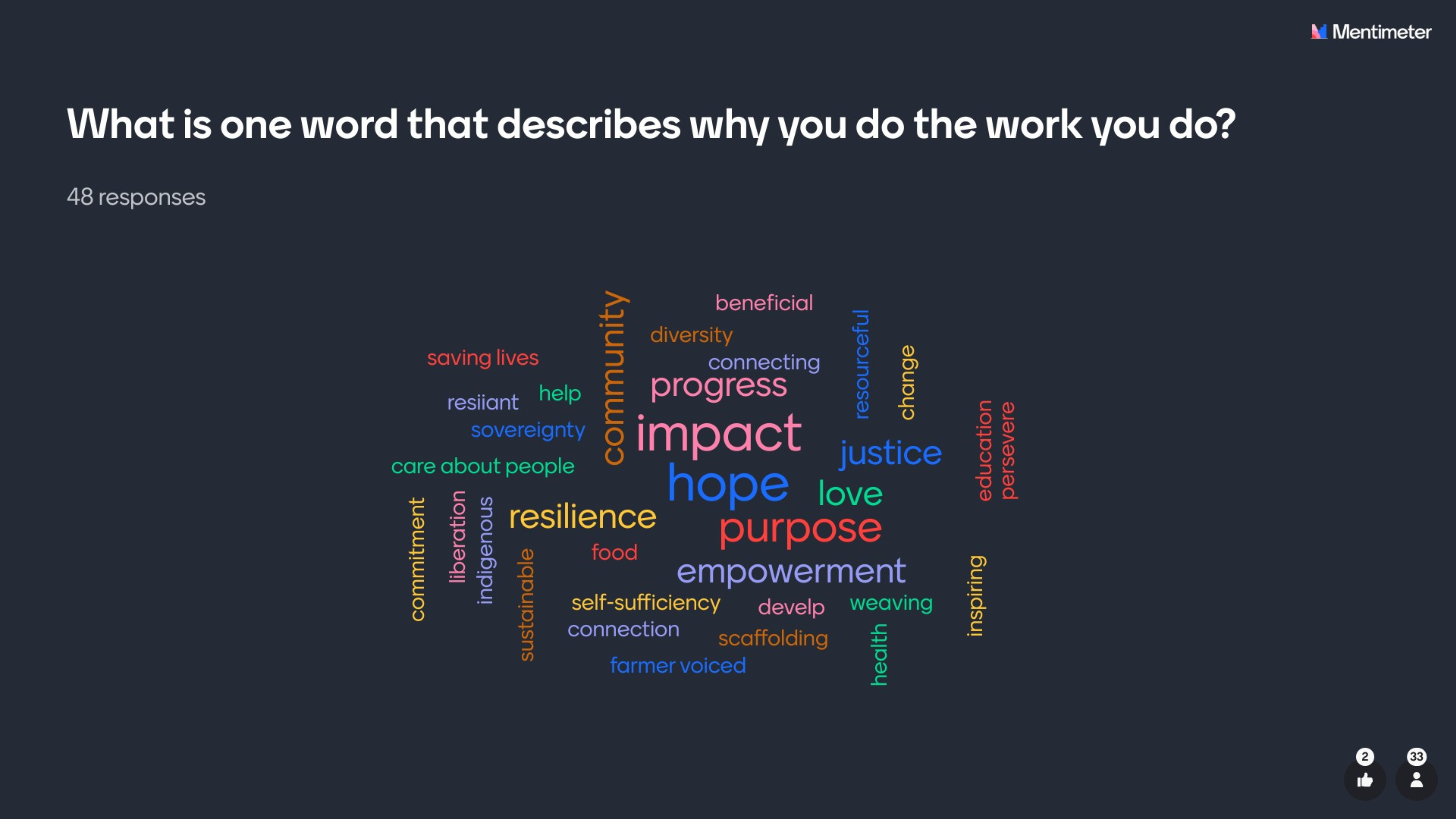
The first speaker of the Summit was regional food system leader Chef Santana Diaz, who gave an invigorating keynote speech focused on actionable means of making a positive difference in our food system. Chef Diaz emphasized his change-making work in procuring sustainable, local, and nutrient-dense foods in the UC Davis Hospital System. Chef Diaz described how he built upon a California Specialty Crop Block Grant from California Department of Food and Agriculture to understand how large institutions such as hospitals can play an integral role in strengthening the local food system. Chef Diaz also discussed the role collaborative partnerships with organizations, such as UC Davis Aquaculture and Roots of Change, have played in bringing great tasting, healthy, and local foods to the UC Davis Hospital System. Chef Diaz closed out his keynote speech by stating the biggest opportunity for increasing institutional procurement is to quantify the larger community benefits that stem from procurement.

Partners were then able to connect with each other in networking breakout rooms that were organized by topic: Urban Agriculture; Coordination; Indigenous Businesses; Farm to Institution; Center Evaluation; Value Added Products; Regenerative Meat; Business Development for Technical Assistance; Agriculture Technologies. Bringing partners together to increase coordination and communication is one of the key activities Valley Vision supports for the Center.
Brett Malone, Chief Business Strategies Officer for California Farmlink, discussed bridge lending and farm finance, a topic Center partners expressed strong interest in learning about through the Summit. Brett began the topic of farm financing by discussing why alternative sources of financing are necessary, especially for small and mid-sized farms and food businesses. Brett provided examples of limited business or credit history, cost of farmland and fishing vessels, and lack of traditional collateral as contributing gaps that Farmlink fulfills with their bridge lending services. Farmlink’s bridge lending loans include operating and term loans, land and housing loans, disaster relief loans, and conservation loans. These bridge lending options create financial feasibility for small and mid-sized farm and food businesses that often struggle with large upfront investments.
Ending the Summit Stronger, Together
Tracy Celio, Program Manager for the Center, used the interactive nature of this Summit to close out with an activity that instructed partners to create a phrase or photo that would be used if the Southwest Regional Business Center created a billboard in Times Square. Participants’ phrases such as “Home is Where the Heart is, Food is Where the Farm is,” “In winter’s storm and summer’s heat, a farmer works so we can eat,” and “Southwest Region Procures 100% of Produce and Meat From Local Sources.” The inspirational billboard activity was supplemented by a closing mentimeter activity that asked for one word to define the Center Community.
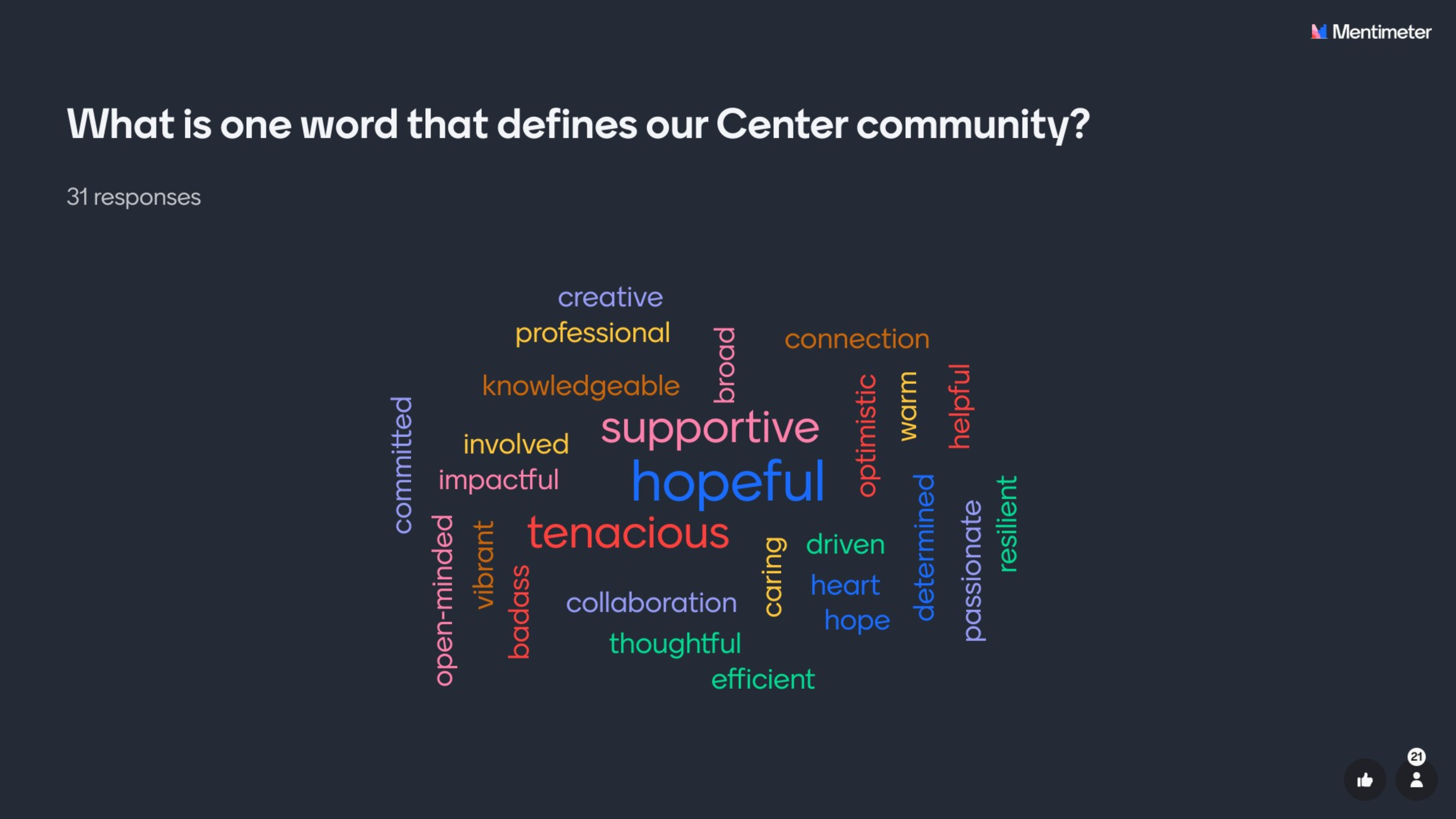
This was the first All Partner gathering in 2025. Throughout this next year, the Valley Vision team looks forward to finding new ways to connect and coordinate Southwest Regional Food Business Center partners.
Join the Southwest Regional Food Business Center for our next webinar in our quarterly webinar series on April 16th from 3-4PM. Register here: http://bit.ly/swRFBCwebinar
To learn more about the Center, visit: www.swfoodbiz.org and subscribe to the newsletter: https://bit.ly/SWRFBC-Newsletter.
Contact us at info@swfoodbiz.org if you’d like to get involved.
Visit the Center’s socials here.
USDA disclosures and guidance can be found at https://bit.ly/USDAdisclosures.
Event Recap – Institutional Procurement: A Path Toward Food System Resilience

On January 15th, the USDA Southwest Regional Food Business Center hosted a webinar on “Institutional Procurement: A Path Toward Food System Resilience.” The event included presentations from three Center partners, including Molly Riordan of Center for Good Food Purchasing, Maxie Blasini of Healthcare Without Harm, and Tim Galarneau of UC Santa Cruz Center for Agroecology. Speakers discussed their organization’s role in purchasing local, sustainable foods in hospitals, universities, and other large institutional settings. The webinar is part of the Center’s quarterly webinar series, where Center partners share best practices and innovative projects on essential topics related to business development and capacity assistance for local producers, farmers, and ranchers.
Each speaker provided key takeaways, such as recognizing organizations’ role in implementing procurement criteria and scoring, shown through the Center for Good Food Purchasing Scoring System, to incentivize institutions to increase their purchasing of sustainable foods. The power of addressing challenges to institutional procurement through an equitable approach of multi-stakeholder collaboration with community partners, was exemplified by Health Care Without Harm’s discussion of their Anchors in Resilient Communities Initiative. The importance of detailed data tracking systems to provide institutions data as a value proposition to increase sustainable procurement, was discussed by the Center for Agroecology through their work in obtaining the UC Sustainable Food Goals.
Attendees, representing a wide variety of organizations, were actively engaged throughout the webinar, as many sought input on how to increase benefits for farmers, ranchers, and food businesses they work with, while also improving the food quality and quantity provided by larger institutions. The next webinar will take place on April 16th and will focus on agriculture technologies for small and mid-sized farms and food businesses. Register: https://bit.ly/SWRFBCwebinar
Register for the Southwest Center’s next Webinar
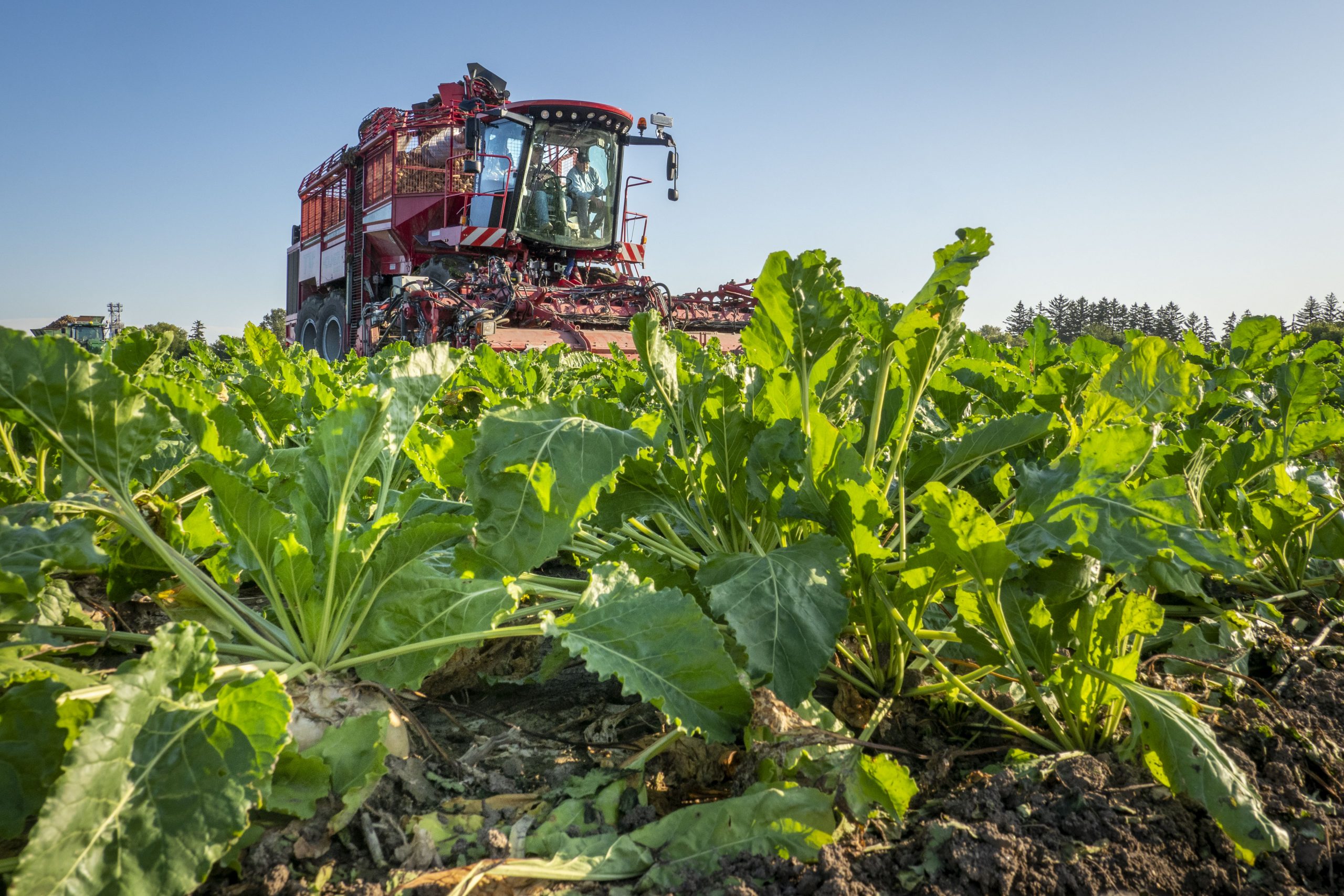
Join the USDA Southwest Regional Food Business Center on April 16th from 3-4PM PST for our fourth webinar focused on agriculture agriculture and technology.
About Valley Vision and the Southwest Regional Food Business Center
Valley Vision leads coordination, communication, and network development efforts for the Southwest Regional Food Business Center. The quarterly webinar series is part of Valley Vision’s efforts to share best practices and to foster a collaborative network among Center partners and other participants.
The Southwest Regional Food Business Center, representing Arizona, California, Nevada, and Utah, is one of twelve USDA Regional Food Business Centers nationwide developed in 2023 to provide coordination, technical assistance, and capacity building to help farmers, ranchers, and other food businesses access new markets and initiatives, as well as navigate federal, state and local funding and resources. With an extensive network of partners from academic, government, and community-based organizations, the Southwest RFBC is dedicated to prioritizing historically underrepresented communities and small to mid-tier businesses.
For more information about the USDA Southwest Regional Food Business Center and its initiatives, visit www.swfoodbiz.org. To stay updated on future webinars and events, be sure to subscribe to the Center’s newsletter: http://bit.ly/SWRFBC-Newsletter.
USDA disclosures and guidance can be found at https://bit.ly/USDAdisclosures.
Visit the Center’s socials here.
The Benefits of a Biomass Circular Economy
On Wednesday, November 20th, 2024 at the Folsom Community Center, Valley Vision hosted a regional convening on the opportunities around biomass utilization and the solutions necessary for the Greater Sacramento region to address air quality, forest health, and workforce development. Regional leaders representing local and state governments, public agencies, non-governmental organizations, community groups, educational institutions, and industry gathered together to gain a shared understanding about biomass utilization; discuss challenges and opportunities; and propel solutions for our forests, working lands and communities.

The Bioeconomy and Establishing a Shared Understanding
Before we discuss solutions, we need to land at a shared understanding of biomass and its uses. Biomass comes from three main sources: municipal waste, agriculture and forest residues. It plays an essential role in the circular economy in that it can be utilized as a renewable source of energy and other marketable products such as building materials, and mulch in landscape and agricultural applications. Currently, we have an abundance of biomass or bioresources in our region, and we do not have a feasible, consolidated strategy to manage these potential resources. As a result, woody biomass fuels catastrophic wildfires, agricultural residues burn in large open piles, and municipal waste overflows in our landfills. These results are problematic because they endanger our people and drain from our economy. There has to be an alternative to our region’s issues.
Obstacles and misinformation surrounding biomass utilization persist. Traditional biomass utilization is combustion of organic material such as open pile burning, emitting toxics and pollutants in the air. However, as technology improves, there are innovative ideas for biomass utilization that address our resource challenges, mitigate pollution impacts, and serve community needs. Now is the time to catalyze these innovative ideas, which emit less toxics and pollutants than wildfires and large-scale pile burning, and does more good than harm for communities.
“There is a perception that these facilities are not controlled to the maximum extent they can – this is incorrect. Biomass facilities are not massive, smoke-stack buildings. We have technologies for small-scale, community biomass processing facilities”. – (Martin Twer, Biomass Program Director, The Watershed Center)
Challenges and Opportunities for Biomass Utilization in our Region
Today’s innovative idea of biomass utilization is a multi-benefit approach. We’re not talking about large-scale clear-cutting in our region. We’re talking about innovative biomass utilization that propels efficient forest management, agriculture and food system resilience, and diverse community-scale solutions. Biomass utilization is not the “perfect” solution, but it exists as a viable alternative and sustainable solution to our collective issues. Valley Vision convened regional leaders representing state and local governments, environmental and educational organizations, and industry, who shared challenges and constraints in addition to areas of opportunity to advance biomass utilization in our region.
Below are key takeaways on the challenges and opportunities for biomass utilization in our region:
Case Studies and Policy Considerations
Barriers and Challenges:
Insufficient investments in validating and scaling up the use of technology, combined with the rapid pace of research and development compared to commercial and pilot-scale manufacturing, pose significant barriers to biomass utilization. Limited investments in the bioeconomy market and supply-chain infrastructure restrict access to the capital needed for market expansion. Furthermore, regulatory complexities and permitting delays, such as challenges related to CEQA, short-term contracts for pilot projects, and the closure or risk of closure of biomass facilities, further hinder the ability to scale up biomass utilization effectively.
Strategies and Opportunities:
To enhance biomass utilization, attracting more investments by involving local, state, and private entities while broadening and expanding partnerships is essential. These efforts can support entrepreneurs and innovations, build trust with communities and businesses, and create workforce development and training opportunities. Diverse partnerships should include local government leadership actively collaborating with tribal leadership and industry partners. Prioritizing the circular bioeconomy sector at regional and state levels requires key actions such as offering tax incentives and credits for bioeconomy projects, investing in supply-chain infrastructure, and establishing longer-term contracts for facilities and operations. Additionally, creating an aggregation hub or public entity to act as a “broker” for long-term biomass feedstock contracts and streamlining CEQA processes, particularly for old sawmill sites, can facilitate progress. Aligning circular bioeconomy projects with California’s carbon reduction programs and goals will further drive growth in the bioeconomy sector.
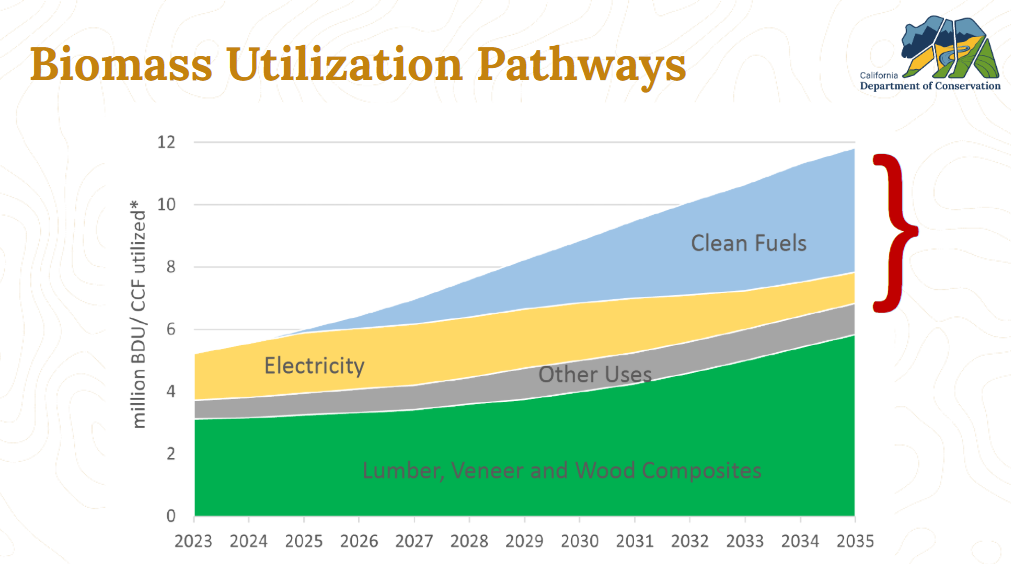
Source: California Department of Conservation. “Draft Wood Utilization Strategy”: Biomass Utilization Pathways expected in the next 10 – 20 years.
Workforce Development: Gaps and Skills Needs
A volatile and risky industry prevents job growth and market expansion. “The bioeconomy market or industry is a relatively new market. Those who are interested in investing in the market want more assurances. Currently, it’s volatile and risky”. (Kerri Timmer, Forest Health Coordinator, Placer County).
The bioeconomy industry, along with adjacent sectors like forestry, agriculture, transportation, and manufacturing, faces workforce challenges due to limited development and training opportunities. Short-term contracts for biomass facilities deter logging and hauling companies from collaborating or entering agreements. Additionally, the seasonal and high-risk nature of forestry jobs exacerbates workforce issues, including difficulties with recruitment, retention, and opportunities for upskilling or professional development. However, the arrival of new companies in the region, such as Glanris, Rio Bravo, and initiatives supported by the governor, presents an opportunity to revitalize biomass utilization and address these workforce challenges through increased investment and job creation.
Opportunities for Workforce Development
The establishment of a hub or public entity to manage risks and negotiate longer-term contracts would not only drive industry growth but also create new job opportunities throughout the supply chain. By stabilizing operations and encouraging investment, such an approach could support sustainable growth in biomass utilization. Additionally, identifying and developing more workforce training programs tailored to the bioeconomy sector can further align industry development with the State’s carbon reduction goals, fostering a skilled workforce prepared to meet the demands of a growing circular bioeconomy.
Final Thoughts
Valley Vision closed the program by summarizing key event learnings and highlighting key points from audience discussion and feedback at the convening. Suggestions include promoting public-private partnerships that uplift and implement community-based solutions, prioritizing local and state advocacy for biomass utilization, and strategizing for advocacy efforts at the federal level.
To learn more about our region’s long-term initiative for inclusive economic development and access to high-quality jobs, visit We Prosper Together. The working lands sector (agriculture, forestry, mining and related manufacturing industries) is identified as one of our region’s target sector strategies with the greatest opportunity for job growth.
Reflecting on the Past, Embracing the Future: Celebrating 30 Years of Valley Vision
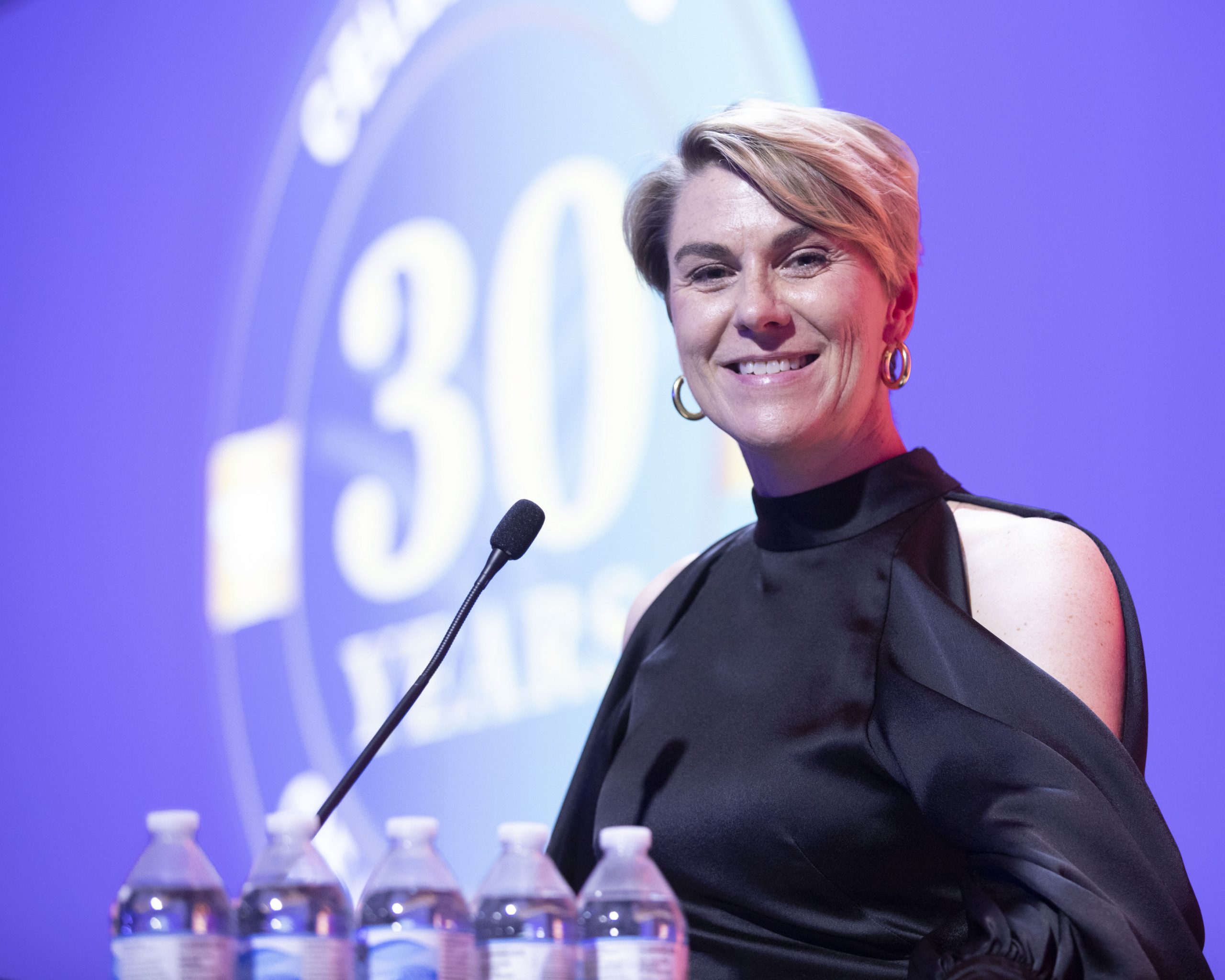
The following is a transcript of CEO Evan Schmidt’s speech given at Valley Vision’s 30th Anniversary Celebration on September 12, 2024 at The California Museum. The speech reflects on Valley Vision’s history while offering commitments for the future.
“As our team at Valley Vision embarks on a new year, I am reminded of the phenomenal body of work our team accomplished in 2024. I also reminisce on the progress Valley Vision has made since our humble beginnings in 1994. In 2024, we celebrated our 30th Anniversary and hosted an event to celebrate in tandem with a 30-year impact report. I am thankful for the many individuals who contributed to both the report and our event – our sponsors, speakers, movie stars, interviewees, Valley Vision staff, board members, and many more for joining us in this celebration of our achievements.
Harkening back to my own beginnings, I wanted to share my own story with Valley Vision, which began in the early 2000s when I was a grad student in the Community Development Group at UC Davis. A part of my program included a “lunch and learn” series that featured professional community development practitioners in the region. Staff from Valley Vision came to our session to talk about their work, specifically the 2004 Sacramento Region Blueprint. That presentation was a lightbulb moment for me; I heard about community engagement, research, and collaborative problem-solving to make our region a better place. It was a perfect fit for my values and talents, and my path was clarified. From the first few years I landed in Northern California, I held Valley Vision as a north star for my career. It took another 10 years, a couple of graduate degrees, a couple of kids, and some other career opportunities before I landed at Valley Vision. I’ve been here ever since and personally celebrated my own 10-year anniversary last year.
Valley Vision wouldn’t be what it is today without visionaries building its foundation and impact. Founders like Gordon Schaber, Dean of the University of the Pacific’s McGeorge School of Law; James McClatchy, Chairman and Publisher of the McClatchy newspaper chain; and Len McCandliss, then CEO of the Sierra Health Foundation, who saw a problem, knew it needed to be addressed for the good of the region, and created an enduring vision. I had the opportunity to get coffee with our surviving founder, Len McCandliss, a couple of weeks ago. He remembered those early days of Valley Vision well and noted that its founding was one of his most proud professional accomplishments. We are grateful for it. Early CEO Susan Frazier, who brought me into the fold, set Valley Vision’s path and coined the phrase “radical collaboration” to articulate what Valley Vision does—maximizing “collisions” both inside and outside the organization to use collaboration to drive innovation and new ideas. Bill Mueller, our longest-serving CEO, steered Valley Vision through a recession and built many of the structures of modern Valley Vision. He is also a mentor to me, and I am grateful for his contributions.
So many dynamic civic leaders from our region have sat on the Valley Vision Board. Their contributions have made it what it is. I’d like to especially call out the current and all the past Board Chairs—it is a big job and a huge commitment to the region. We couldn’t do what we do without community partnerships, and we have too many to name. Some particularly long-standing relationships that have been fundamental to our work are SACOG, our regional workforce Boards, Sacramento Metro Air District, and the California Emerging Technology Fund, among many others. Thank you for trusting us.
The work of Valley Vision rests on all the staff over the years, and Valley Vision staff are some of the most talented and passionate people you will find. I’d like to recognize our current staff who are excelling on a regular basis. I’d like to call out our leadership, Trish Kelly, Alan Lange, and Renee John, and congratulate Adrian Rehn on his 10-year anniversary with Valley Vision this year. Alan and Trish are right behind him.
To provide clarity about who we are and what we do, we created a retrospective report and a video that showcased our initiatives over the past 30 years. Our 30th Anniversary video highlights our history, accomplishments, and vision for the future. Additionally, our 30-Year Impact Report offers a comprehensive overview of Valley Vision’s contributions to the well-being of our region, focusing on areas such as healthcare, air quality, workforce training, economic development, and support for vulnerable populations. These resources reflect not only Valley Vision’s history but also the broader history of our region, serving as a testament to the vision and impact of many individuals.
Valley Vision works on systemic solutions to long-term issues, often within systems that aren’t plainly visible or by supporting partners through indirect means. This can make our work challenging to communicate and sometimes difficult to understand. Boiled down, Valley Vision leads a shared vision for ensuring the quality of life for everyone within the Capital Region. We use the values of community equity, economic prosperity, and environmental sustainability in all that we do to drive that shared vision. We achieve this by facilitating collaborative problem-solving, working with community, business, and government partners to improve the lives of people in our region, creating and guiding actionable research, aligning regional systems and advocating for system change when needed, and mobilizing partners for community change by engaging and co-designing solutions with those most impacted. This is our shared agenda for quality of life through collaboration, actionable research, system alignment, and community impact—always driving toward sustainable, inclusive, thriving communities.
There are several opportunities that I am particularly excited about. Despite national challenges, the Sacramento region’s economy is stronger than ever. According to the Brookings Metro Monitor analysis of the top 54 metro areas, we’ve launched into the top 20 across metrics in job growth, inclusion, and prosperity, with standout progress in closing inclusion gaps. There is still plenty to do, but this reflects significant improvement from prior years, as recent as 2023 when we trailed outside of the top 34 in some categories. I am excited about building on that momentum through We Prosper Together, a collaborative regional effort (of eight counties and more than 150 partners) supported by the State of California, bringing more than $19M to our region to reimagine our economy and workforce to meet community needs. I see an opportunity to truly align key strategies, bring about new investments, and create inclusive opportunities and livable wages, especially for those often excluded. I am also excited about the ways we are knitting climate resilience and economic growth closer together in our economic, workforce, and community development work. The Sacramento region has the opportunity to become a shining star in this space by amplifying climate-smart food innovation, clean mobility, and sustainable infrastructure that supports a low-carbon economy. This progress reflects the efforts and robust leadership of many of our partners and stakeholders. We have the opportunity to align and amplify these themes by creating climate-resilient infrastructure and workforce and economic opportunities that support it. Furthermore, I am excited about a new generation of leadership and a focus on inclusivity. Organizational and institutional cultures are becoming more adaptive and inclusive, which is a good thing. We can harness these changing sensibilities to build new, more inclusive systems for our region. This is a call to action for everyone, new or old, to civic spaces: make room at your table for new voices and champion and support new leadership.
In order to seize these opportunities, I want to share Valley Vision’s commitments for the future. These commitments reflect the energy and leadership of our Board and staff. Valley Vision will continue to serve as your trusted community partner, build our regional capacity to drive economic inclusion, climate resilience, and community well-being, and challenge our communities to collaborate and address tough issues through hard conversations, shared accountability, and courage to try new things, demonstrate our commitment to moving collaborative thought and data analysis toward clear action and community change, and work in service of improving the lives of the people of this region.
Reflecting on the strength of our team and the dedication of our board members, I am energized by what’s possible at Valley Vision and for our region and state. As we move into 2025, we are committed to building on our successes, deepening our community partnerships, and continuing to drive positive change. We look to the future with optimism and excitement, knowing that together, we can achieve a sustainable, inclusive, and thriving community for everyone. Thank you for being a part of this journey and for your support.”
MEATing the Moment: Valley Vision Attends 3rd Regenerative Meat Summit
By Grace Kaufman & Ethan Mermell
On November 18th, Trish Kelly, Grace Kaufman, and Ethan Mermell of Valley Vision’s Food and Agriculture team attended the 3rd California Regional Regenerative Meat Event hosted by Roots of Change, UC Davis Institute of the Environment, and IC-FOODS, in collaboration with Mulvaney’s B&L and Cream Co. This event was a celebration of three-years of USDA-funded work to develop high-value regional meat supply chains in Northern California. As the lead for coordination and communication for USDA’s Southwest Regional Food Business Center, Valley Vision has participated in this effort to learn about supply chain and market challenges and opportunities for regenerative ranchers in California and support the project through a variety of ways. This includes facilitating connections with several of our food and agriculture partners who work across the region and throughout the state; sharing information about the resources of the Center and the state-funded California Jobs First Initiative which Valley Vision manages for the region – We Prosper Together; and coordinating on institutional procurement activities led by the University of California and the California Dept. of Food and Agriculture (CDFA).
The event kicked off with a panel discussion about the launch of the University of California Market, emphasizing the outcomes of launching system-wide purchasing of regional and regenerative meat for the UC system’s schools and hospitals. Marilyn Biscotti, UC Office of President; Clifford Pollard, Cream Co Meats, and Kathy Webster, TomKat Ranch and Beef2Institution Collaborative spoke on their experiences procuring regenerative meat in University and K-12 school districts. Major barriers include long-term contracts to meet demand of conventional food suppliers, processing and aggregation, as well as market channels for whole animal usage. As an aggregation and distribution hub for ranchers throughout the state, Cream Co Meats provides the “missing middle” in supply chain infrastructure for institutional procurement. Cream Co Meats has purchased 1.3 million pounds of regenerative, West Coast meat from ranchers in the past year, and plans to procure an additional 30 percent annually, serving as an aggregator for resale to institutions. The panel ended with an exciting announcement – starting in 2025, the University of California will purchase 400,000 pounds of regenerative meat from Cream Co Meats.
Following a delicious lunch of local produce and regenerative meat from PT Ranch, Sarah Keiser, Wild Oat Hollow, Jim Kleinschmit, Other Half Processing and Growing GRASS, Nick Anicich, CDFA Farm to School, and Steve Schwartz, Interfaith Sustainable Food Collaborative, spoke of new market opportunities for regenerative growers. Steve Schwartz’s presentation highlighted new policies such as AB 888 that support on-farm harvesting for cultural practices. Nick shared a list of CDFA’s funding opportunities and encouraged ranchers to get involved in farm to school and institutional procurement. Sarah discussed the market opportunities, and ecosystem services that cows, sheep, and goats provide through fire management grazing. Jim discussed new market opportunities for ranchers, such as regenerative leather products.
IC Foods then presented a demo on their Regional Regenerative Meat Resource Portal which provides a directory of the regional regenerative meat community, such as contact information and resources on markets and opportunities.
The last panel of the event focused on remaining challenges and solutions for regenerative meat. This panel’s speakers, Michael Delbar, CA Rangeland Trust and Loren Poncia, Stemple Creek Ranch discussed marketing and how the community’s awareness of regeneratively grown meat is growing. Challenges discussed included the dwindling amount of processors and the need to increase producer awareness of available grants, as economic feasibility persists as a challenge across the board faced by ranchers. It is important for these businesses to be viable given that regenerative grazing differs from conventional meat production through practices that improve soil structure and build soil organic matter, leading to carbon sequestration.
Jenny Lester Moffitt, USDA Under Secretary for Marketing and Regulatory Programs, discussed a broad range of funding opportunities from USDA and new initiatives that support small and mid-sized farmers and ranchers, such as the USDA Regional Food Business Centers- 12 multi-state centers across the country providing new resources to support farmers, ranchers and food producers and more resilient regional food systems. As part of this effort, USDA has hired 40 fellows to support food system transformation, including programs to support regenerative agriculture. Jenny noted that supply chain infrastructure such as processing facilities are a major challenge for small to mid sized ranchers. As part of Valley Vision’s role in the USDA Southwest Regional Food Business Center, we actively share information about upcoming funding opportunities and resources for supply chain infrastructure and new market channels, and the Center’s network of partners provide capacity building support to access these resources. We also include the Regional Regenerative Meat Portal in Center resources.
The event ended with CDFA Secretary Karen Ross, who provided an optimistic and forward-looking view of regenerative agriculture in California. Secretary Ross discussed the future of regenerative agriculture, which planted the seed for creative networking discussions that were paired with regenerative meats, including goat from Neuman Family Ranch, and local, seasonal produce prepared by Chef Mulvaney and staff.
To learn more about Roots Of Change and the regenerative meat project, visit: https://www.rootsofchange.org/projects/transformation-of-californias-meat-processing-capacity/
To learn more about the USDA Southwest Regional Food Business Center, visit www.swfoodbiz.org and sign up for the newsletter here: http://bit.ly/SWRFBC-Newsletter
Valley Vision Uplifts Manufacturing in the Region
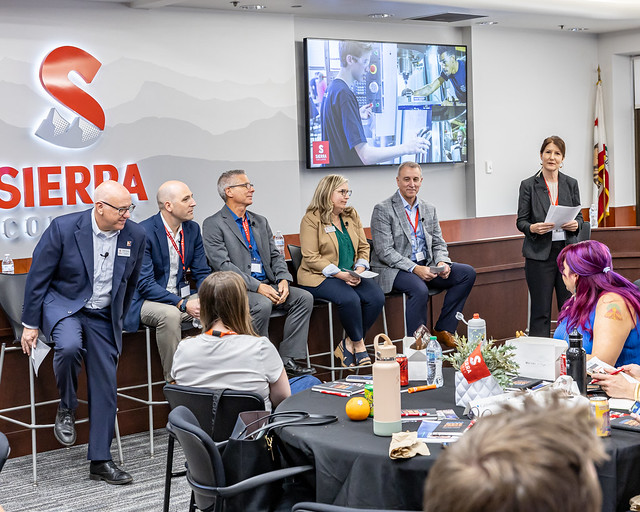
On September 24th, Valley Vision, in partnership with the Greater Sacramento Economic Council, Los Rios Community College District, and the Sacramento Valley Manufacturers Association, hosted an Advanced Manufacturing Sector Advisory focused on Precision Manufacturing. Precision manufacturing emerged as a key priority industry sector in our region’s California Job’s First research assessment. This advisory event brought together industry leaders, educators, and regional stakeholders to discuss workforce challenges and strategies for economic growth in the sector. Discussions highlighted manufacturing’s critical role in the regional economy and the urgent need to adapt to advancing technologies.
One key issue identified was the shortage of candidates with the specialized skills needed in roles such as electrical and mechanical technicians, CNC operators, and automation specialists. Panelists emphasized the importance of dual enrollment programs and apprenticeships that offer students hands-on experience, aligning education with industry needs to build a sustainable talent pipeline.
Participants explored how AI and automation are reshaping manufacturing, not by eliminating jobs but by transforming them. As diagnostics and machine operations increasingly rely on AI, workers must enhance their troubleshooting skills and continuously upskill. The group highlighted that automation offers growth opportunities, provided there is a commitment to ongoing education and technical training, which will ensure that the workforce stays adaptable and aligned with technological advancements.
Collaboration between manufacturers and educational institutions was underscored as essential for aligning training programs with industry needs. Panelists highlighted successful strategies, including dual enrollment, company-sponsored apprenticeships, and active engagement with schools. Adult education programs were also praised for enabling career changers to transition into manufacturing roles.
One specific program highlighted by several employers was the Mechatronics program at Sierra College, which has been a frontrunner in advanced manufacturing skills training with key employer partnerships including Siemens, Bosch, and others. Sierra College was also the location of a recent tour highlighting regional opportunities in precision manufacturing during the recent California Economic Summit. This event included a panel discussion with employer and education partners and a tour of the college’s programs and facilities. In response to questions about how Sierra College has been able to be so responsive to industry, CTE Dean Amy Schulz shared, “We do our best to respond to employers’ immediate workforce needs while also listening to our economic development partners’ signals of what is to come.”
The Precision Manufacturing Advisory reinforced the urgent need for a skilled workforce and the value of collaboration to meet this demand. By strengthening partnerships among industry, education, and community organizations, the region can build a robust talent pipeline that keeps pace with rapid advancements in AI and automation. Programs like Sierra College’s Mechatronics and initiatives like dual enrollment, apprenticeships, and targeted adult education programs, drive forward accessible, innovative training that will strengthen the region’s manufacturing sector. Sustained attention and investment in precision manufacturing can help expand accessible quality jobs for our region’s residents for years to come.
Valley Vision Helps Showcase Sacramento As Co-Host of California Economic Summit
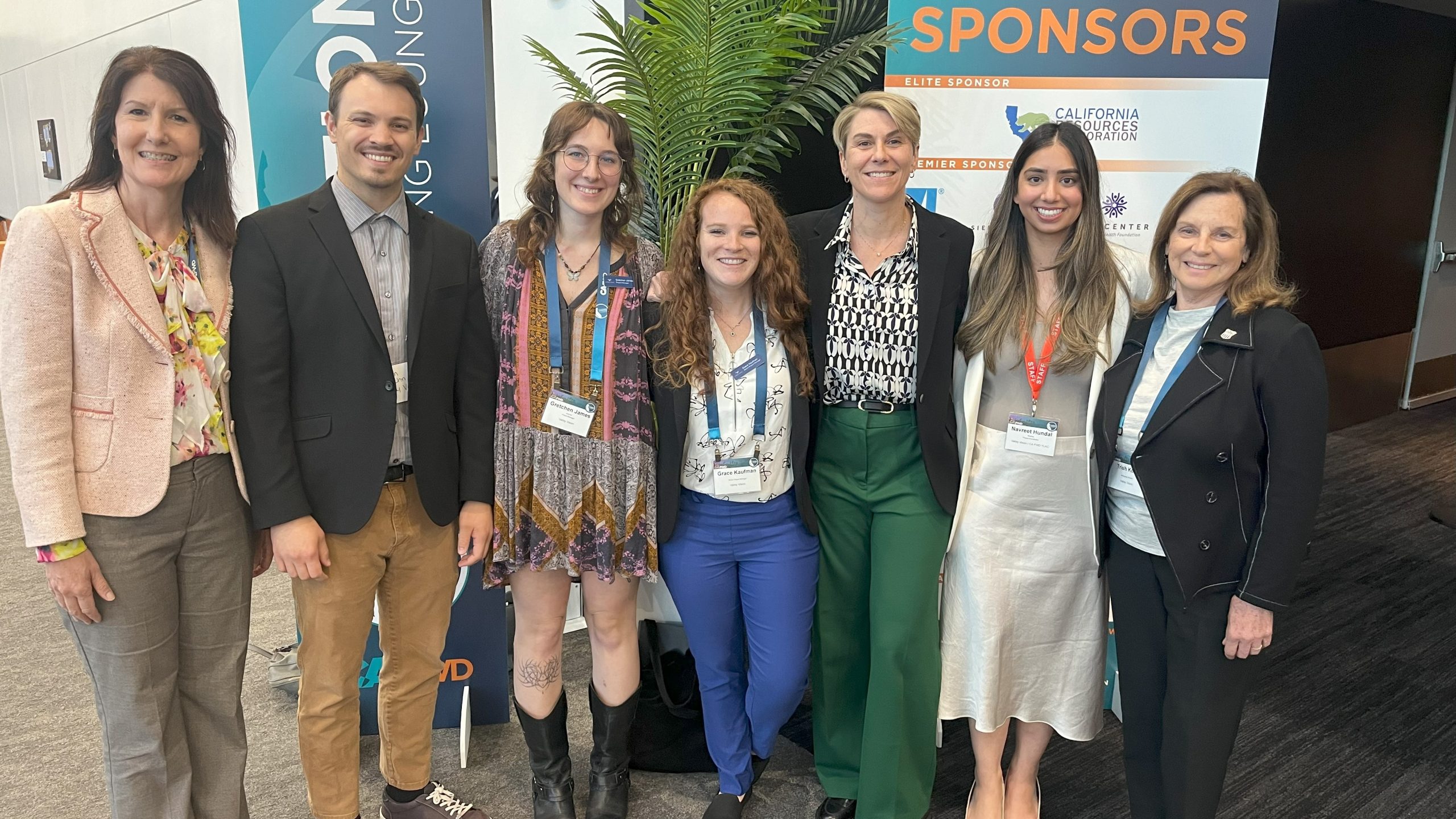
Valley Vision helped co-host this year’s California Economic Summit, organized by California Forward and held for the first time in Sacramento since 2016. Held October 8-10, 2024, the latest iteration of the annual Summit proved to be an incredible showcase for the Sacramento region’s leadership on inclusive economic development, workforce, innovation, and more.
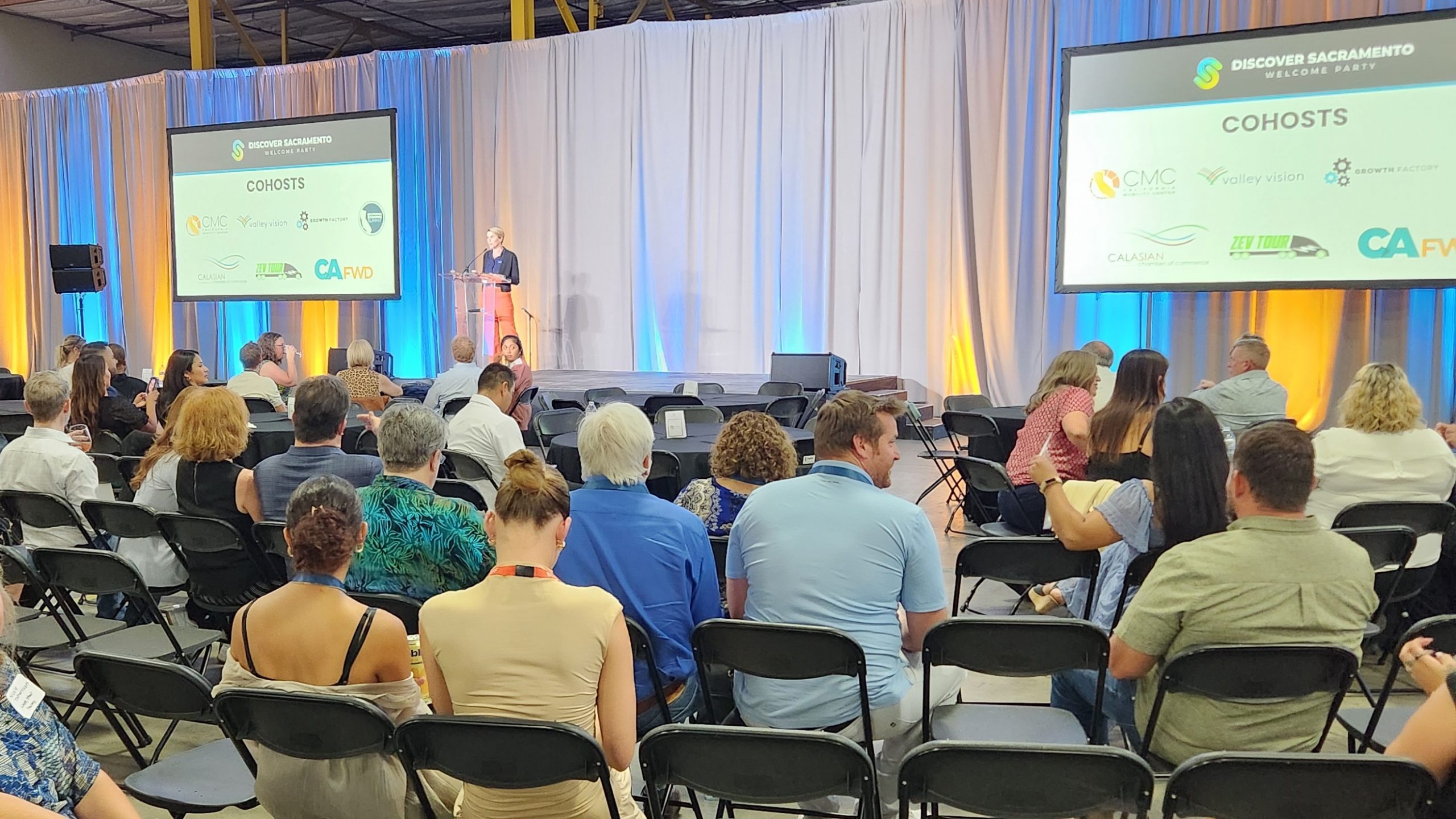
Valley Vision organized a set of regional tours on the first day of the Summit, which gave participants an on-the-ground perspective of how local communities are tackling some of our biggest economic and environmental challenges. By showcasing everything from sustainable food systems to novel workforce training programs, these tours highlighted the solutions that are helping to build a more resilient, inclusive future for California. See below for photos highlighting the tours:
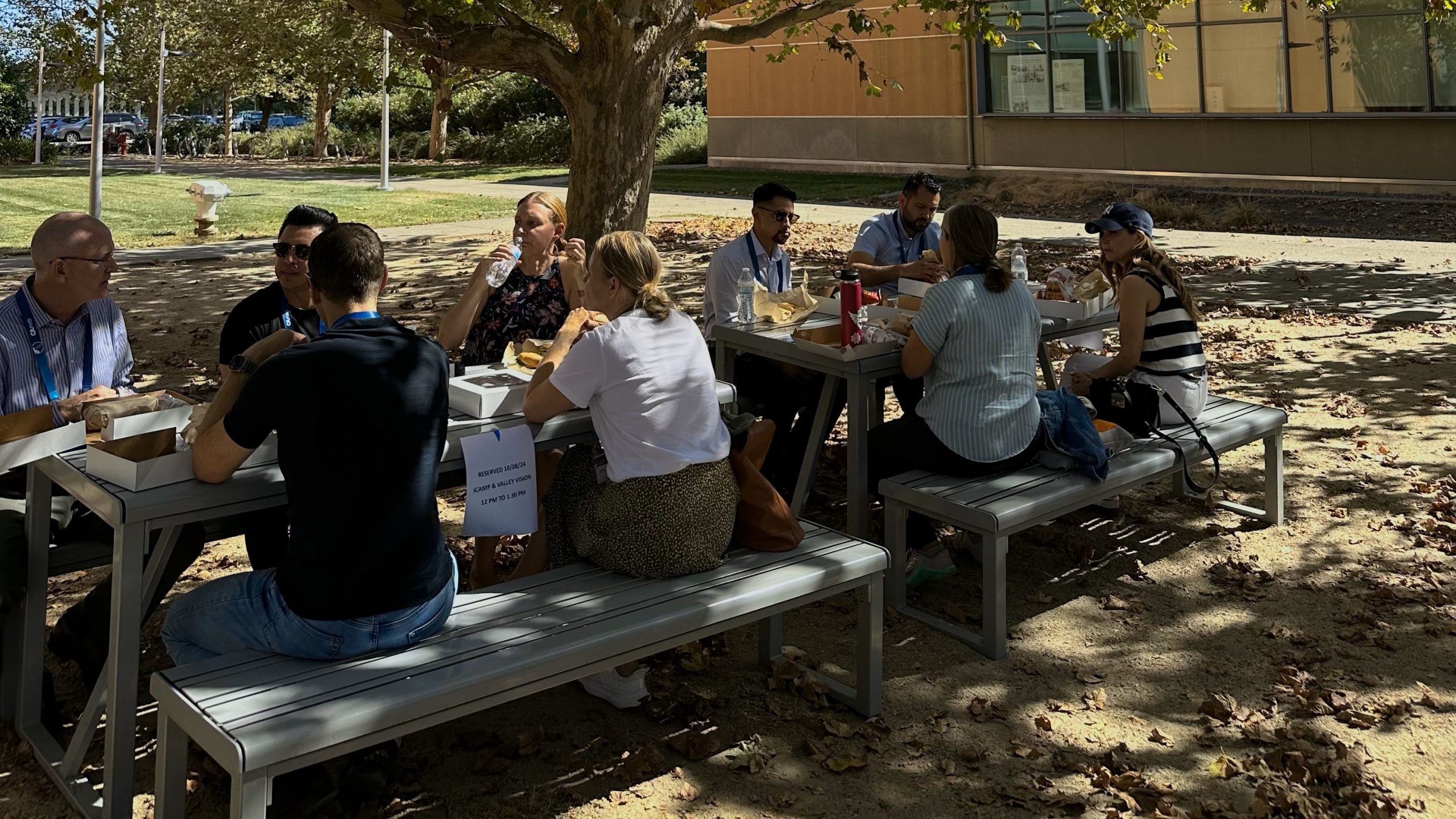
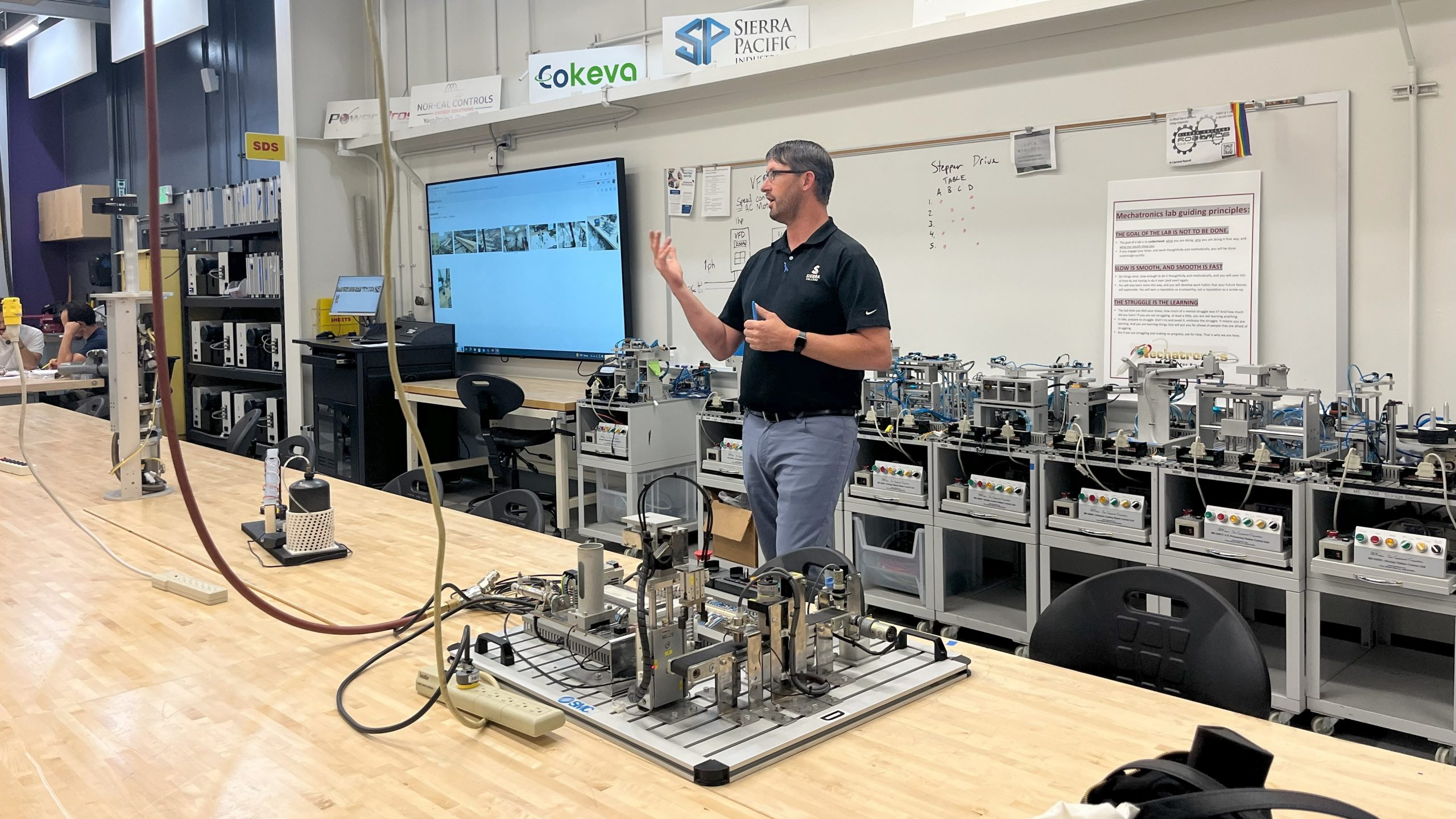
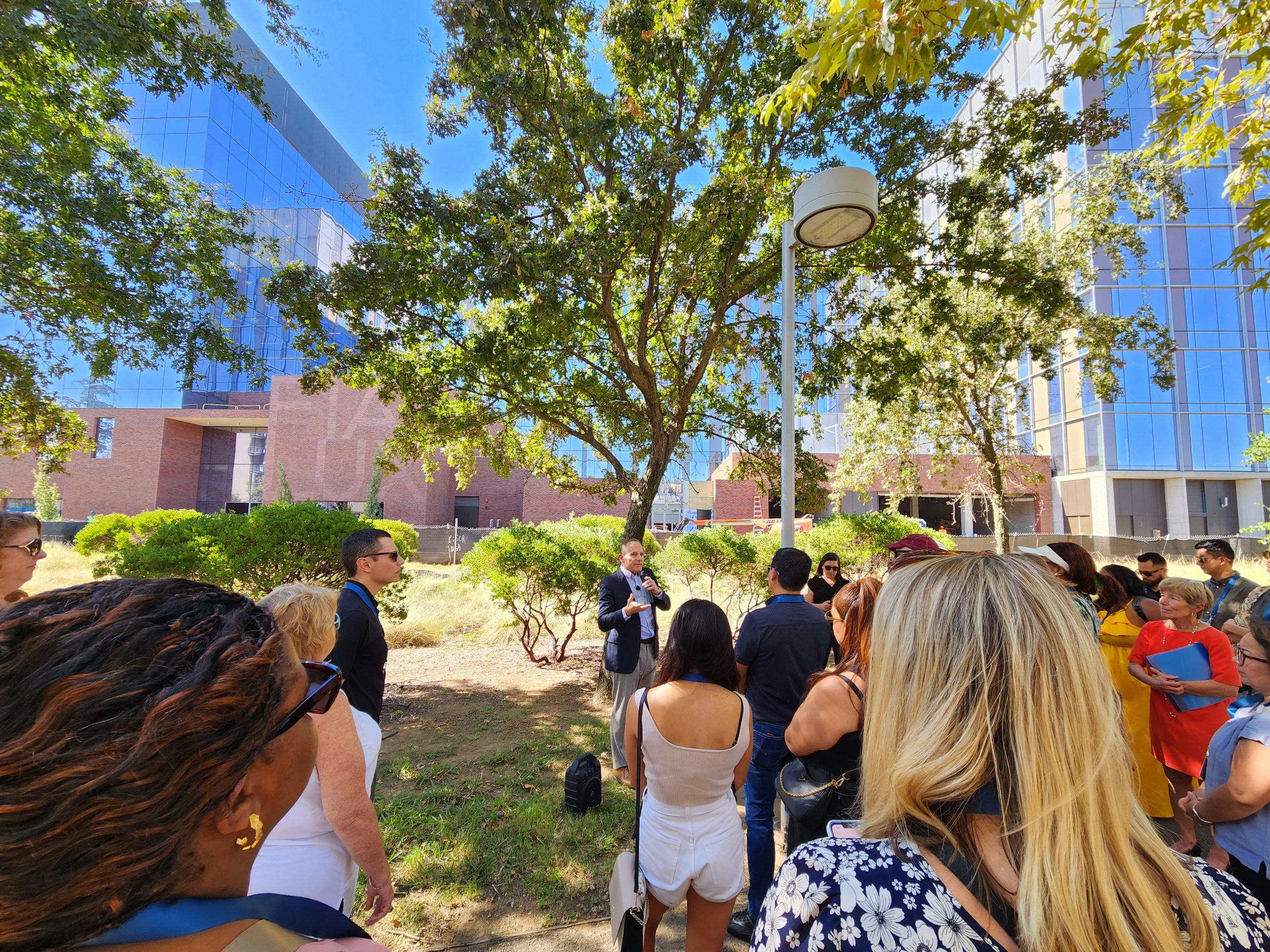
The welcome reception followed the tours, and served as a kickoff for both the California Economic Summit and the Growth Factory’s GFX Summit. In addition to showcasing our region’s topline facility for advancing clean mobility, attendees could taste several gourmet foods created with plant-based, lab grown meat alternatives. Innovative!
The main days of the Summit (October 9 and 10) featured plenary sessions, action-packed workshops, networking events, and more. See below for a few highlights:
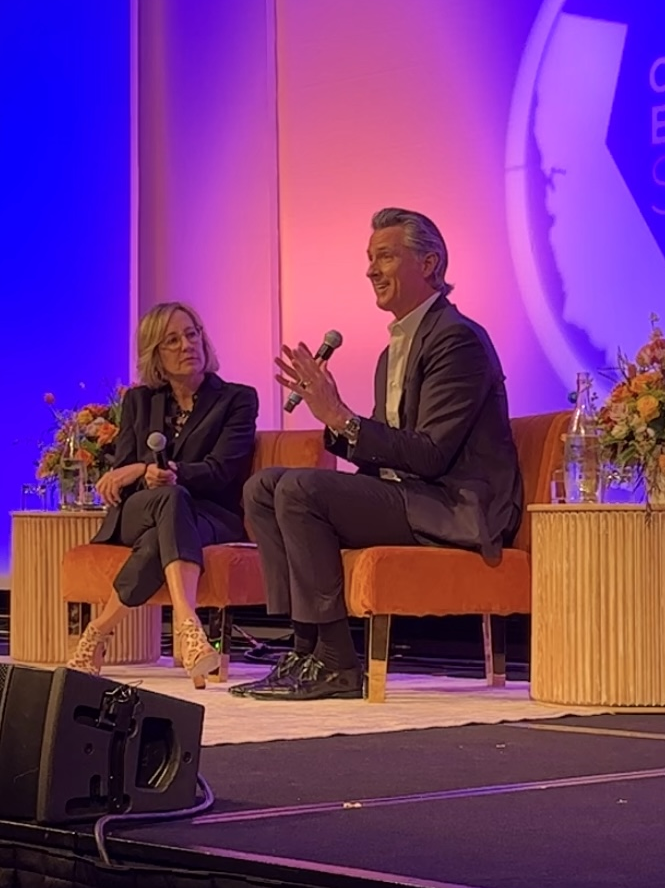

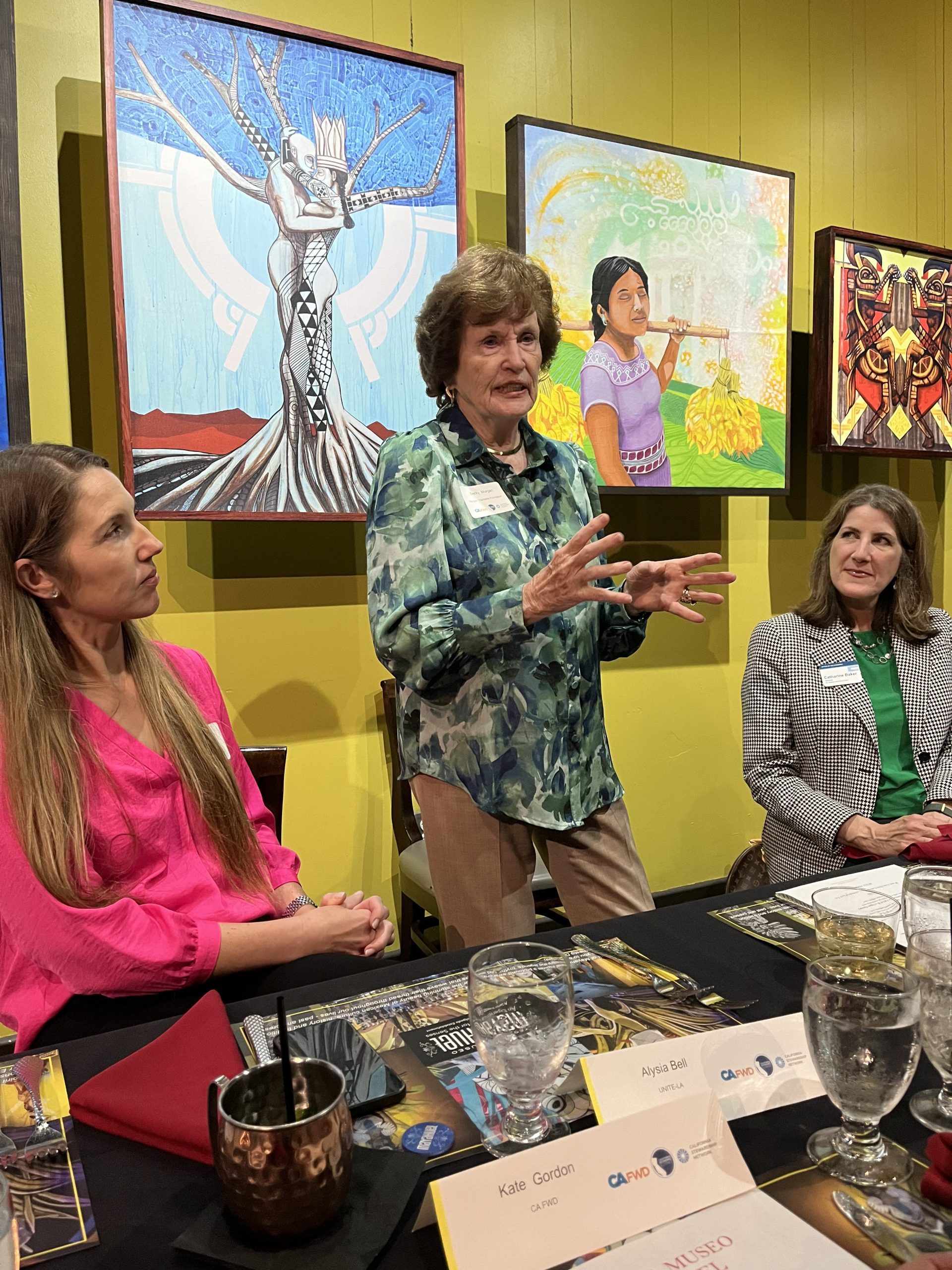
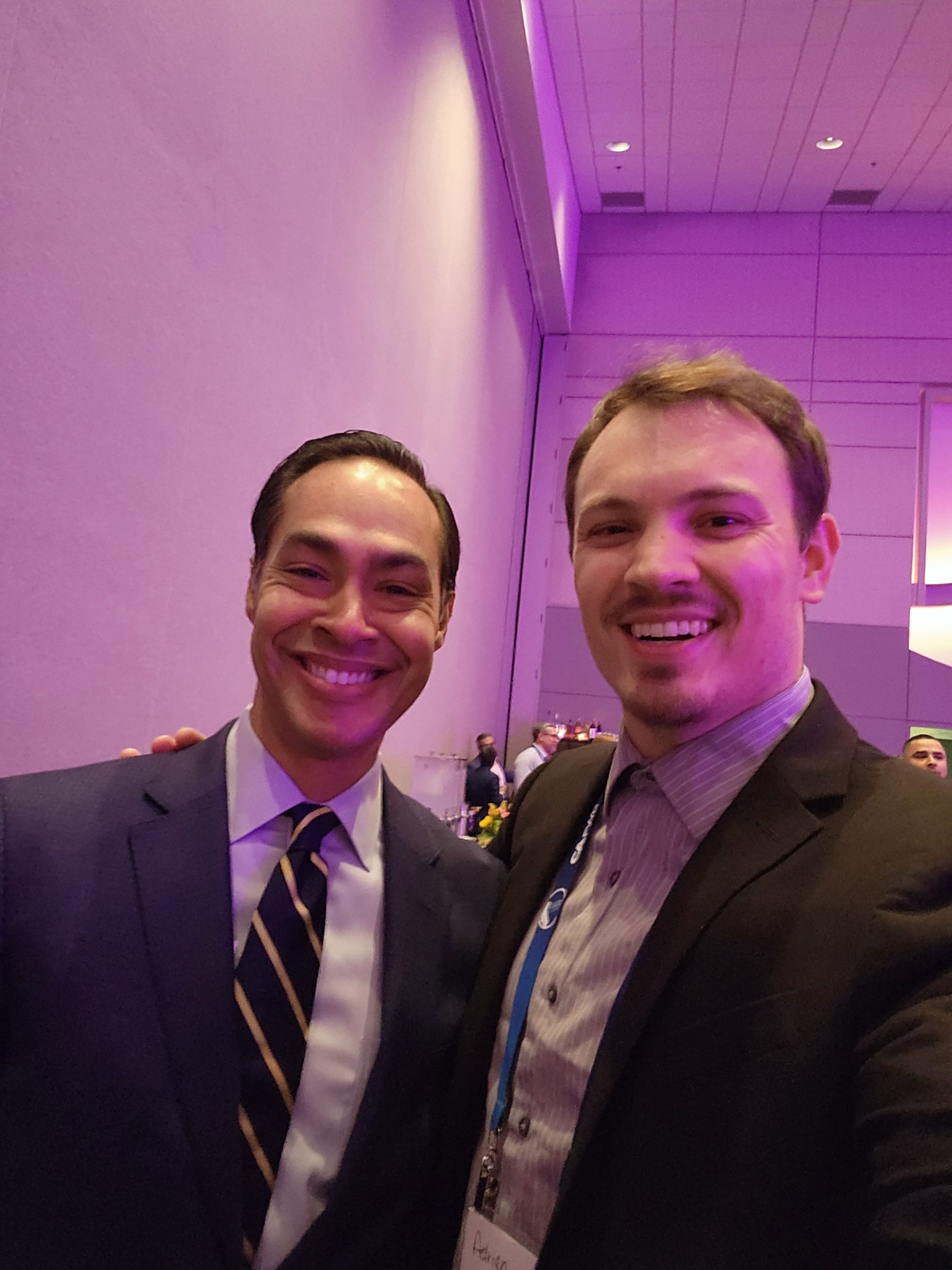
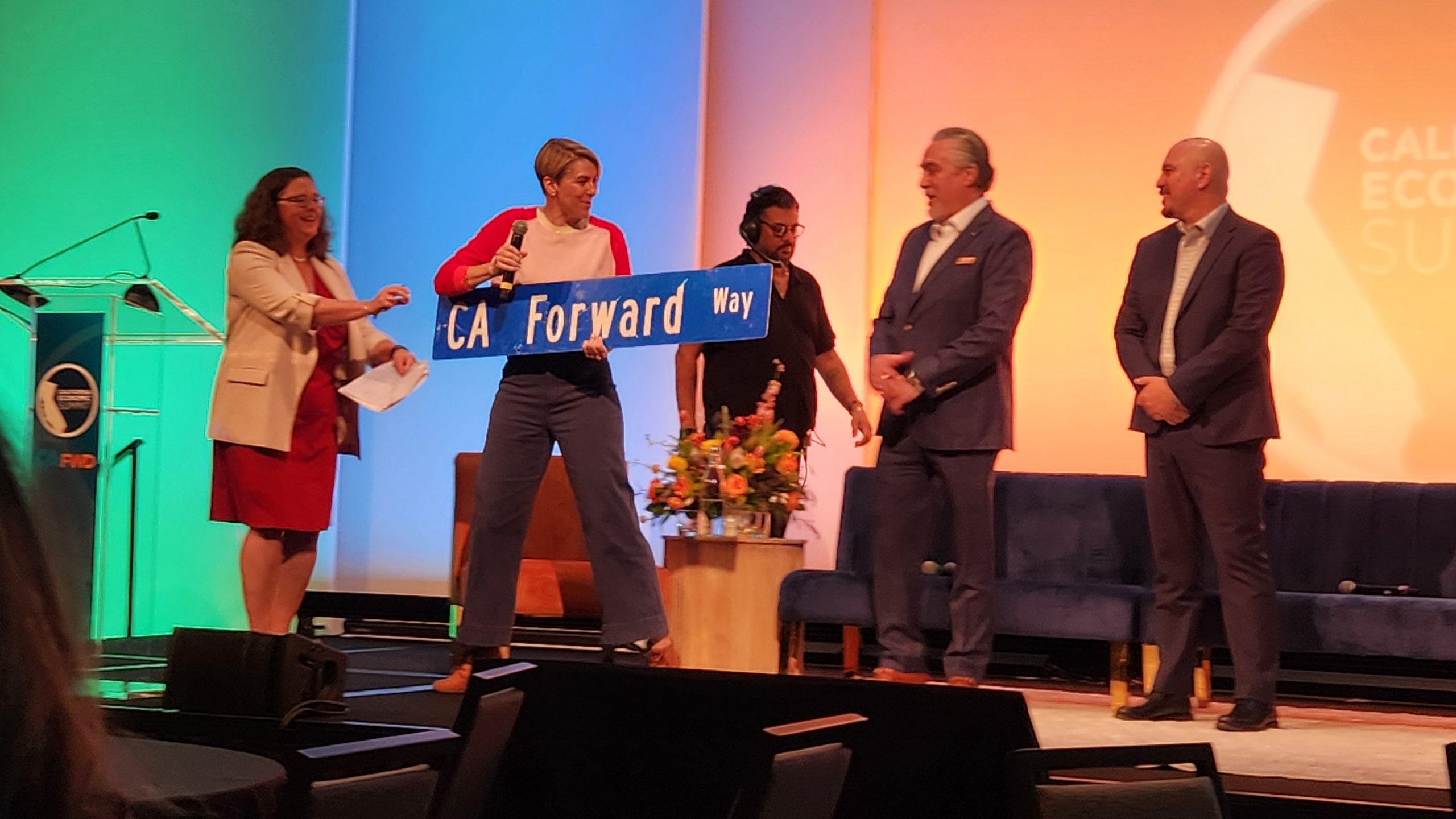
Finally, the Summit ended with a “handoff” from Valley Vision’s Evan Schmidt to leaders in Stockton, California, which is hosting next year’s Summit the week of October 20th, 2025. We wish Stockton the best and look forward to learning how they are building a vibrant economy. Subscribe to California Forward’s email newsletter for more updates! Thank you to California Forward, its staff, and partners for a fantastic showcase of Sacramento.
Adrian Rehn is a Senior Project Manager overseeing air quality and environmental projects as well as Valley Vision’s communications.
Valley Vision Takes On Longstanding Regional Climate Collaborative

We are thrilled to announce that the Capital Region Climate Readiness Collaborative (CRC) has officially transitioned from CivicWell to Valley Vision. CRC was established in 2014 to improve collaboration and coordination between government, business, and community as it relates to climate change adaptation and mitigation. Valley Vision joined the Collaborative in 2015 and has had leadership roles in the Collaborative since.
This transition marks a new and exciting chapter for CRC, as Valley Vision is already working to advance climate resilience and collaboration in the greater Sacramento region through several programs such as the Cleaner Air Partnership and We Prosper Together, a California Jobs First Initiative.
As CRC’s new home, Valley Vision will continue to facilitate regional conversations to improve coordination and take action on climate adaptation and mitigation. The Capital Region Climate Readiness Collaborative has long been a crucial platform for bringing together a diverse set of stakeholders, including local governments, businesses, nonprofits, and community groups, to address climate challenges facing the region, such as warming air and water temperatures, risk of wildfire, more extreme heat waves, variable precipitation and seasonal shifts, and loss of ecosystem habitat, to name a few. Now, with Valley Vision’s leadership, we are positioned to build on these efforts and bring even greater capacity to support regional resilience and collaboration.
We invite Valley Vision’s partners to learn more about the Capital Region Climate Readiness Collaborative and consider joining the Collaborative as a member. Whether you are a business leader, government agency, academic institution, or community organization, your participation will help strengthen our collective ability to build a climate-resilient future for all.
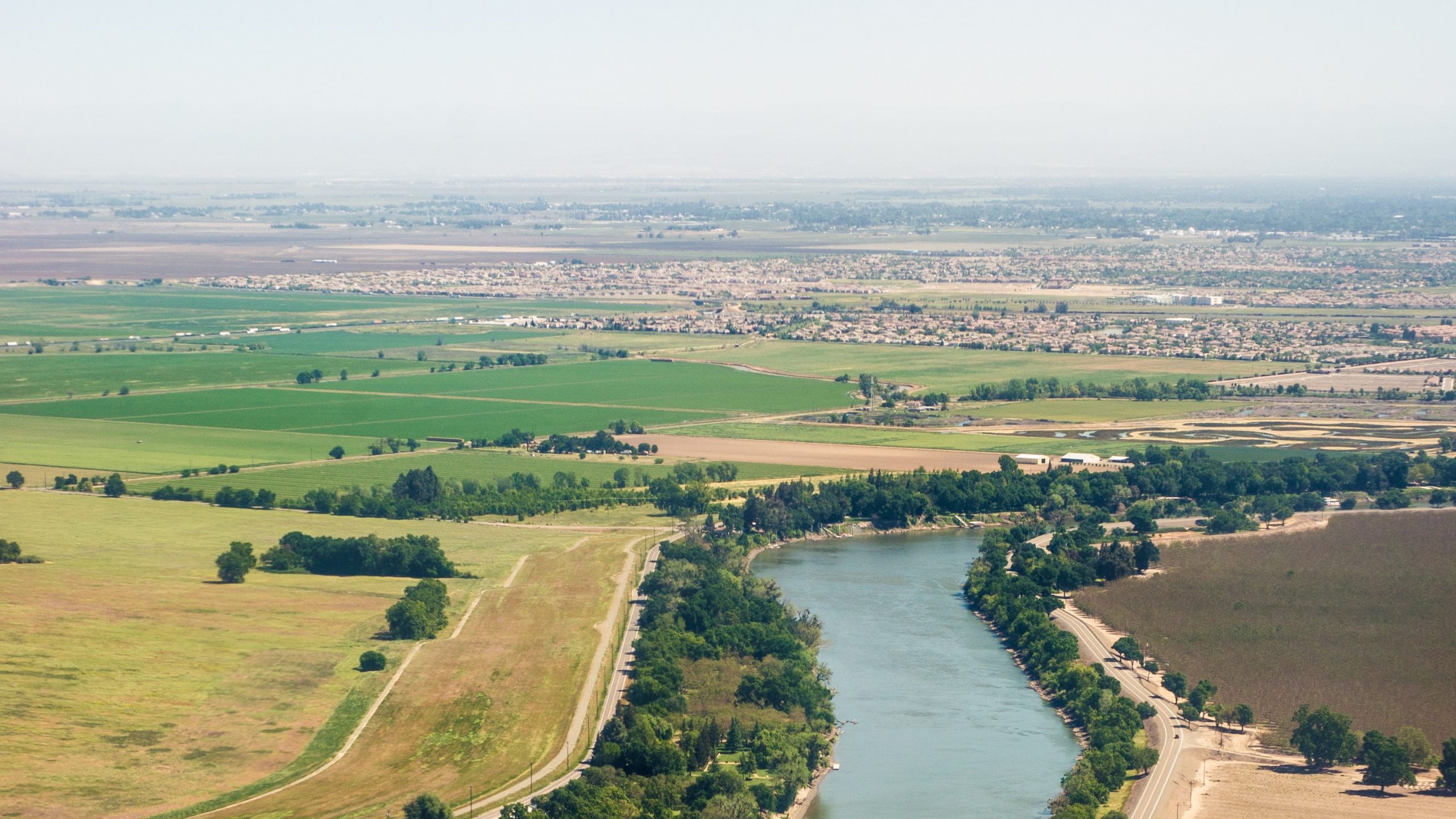
Upcoming Events You Don’t Want to Miss
To kick off this new chapter, we’re excited to host/cohost a series of events designed to engage our community and provide opportunities for learning, networking, and collaboration.
November 20th, 10:30 AM – 2:30 PM, Biomass Workshop, Folsom Community Center
- Join for an in-depth workshop focused on the role of biomass in climate resilience. This event is in collaboration with the Cleaner Air Partnership, the Los Rios Community College District, and CRC. With over 100 attendees expected, this workshop will establish a shared understanding of biomass utilization, explore the future of forest management and agricultural careers in our region, and mobilize leaders and decision-makers for action. It’s an incredible opportunity to connect with regional experts, researchers, and policymakers. Registration link.
December 12, 12:30 PM – 4:00 PM – CRC Members-Only Meeting, Sierra 2 Center – 2791 24th Street, Sacramento CA 95818 (Room 10)
- This meeting, exclusively for CRC members, will feature presentations on the state of climate adaptation in the Capital Region. Attendees will have the opportunity to engage in roundtable discussions, identify collaboration opportunities, and explore how CRC can better support members’ efforts in addressing climate challenges. If you are already a member, this is your chance to help shape the future of climate action in the region. If not, consider joining to be part of this important conversation! Registration link
Join the Capital Region Climate Readiness Collaborative
There has never been a more critical time to take action on climate resilience. CRC is a diverse and growing collaborative, and with Valley Vision’s leadership, we are ready to take CRC’s impact to the next level. We invite you to join us as a member and be part of the solution as we work together to create a more climate-resilient Capital Region.
To learn more about membership opportunities, visit https://climatereadiness.info/about-us/join-the-collaborative or contact Grace.Kaufman@valleyvision.org.
Catalyzing the Future of Biotechnology Talent

The biotechnology sector is teeming with opportunity amid rapid innovation, but it also faces significant workforce challenges. To stay competitive, the industry must be responsive to the evolving skills gap and ensure that its workforce pipelines are strong, inclusive, and aligned with regional growth strategies. This challenge led to the initiative of the Talent Pipeline Management (TPM) Biotechnology employer collaborative, led by Valley Vision and Capitol Impact, in collaboration with the Sacramento Employment and Training Agency and the City of Sacramento.
On September 17, 2024, Valley Vision hosted the Biotech TPM Employer Collaborative Kickoff event, which brought together industry leaders and featured remarks from Sacramento Mayor Darrell Steinberg. This initiative aims to identify and address workforce challenges to improve the pipeline of opportunity to quality jobs in this sector. The TPM process helps employers build a pool of qualified candidates, reduce hiring time and costs, and create high-quality job opportunities in biomedicine. The U.S. Chamber of Commerce Foundation developed TPM to help employers build high-performing talent pipelines.
During the event, leaders from companies like Jackson Laboratory, Thermogenesis, UC Davis, and Thermo Fisher Scientific shared common challenges in recruiting and retaining talent within the rapidly evolving biotech landscape. Retention remains a critical issue, particularly with competition from nearby regions. High turnover rates in entry-level roles highlight the need to create stable and attractive career pathways that appeal to a diverse workforce.
Employers expressed concerns about the time and resources required to train new hires. In specialized fields like medical device engineering, where highly specific skills are in demand, onboarding can be a lengthy process. As the pace of innovation accelerates, companies must also adapt quickly to changing skill demands, adding complexity to workforce development efforts.
The TPM model recognizes the role educational institutions and nonprofits can play in addressing these challenges. Partnerships with organizations like UC Davis Aggie Square, regional community colleges, and nonprofit groups are critical to creating more accessible and inclusive pathways into the biotech workforce. By aligning education and training providers with employer needs, the initiative is focused on building a diverse, skilled workforce that is prepared for the demands of the industry.
The TPM approach emphasizes collaboration and data-driven decision-making. It brings employers together to identify key roles, analyze skills gaps, and customize workforce solutions to address talent shortages. This structured methodology has already been adopted statewide in Kentucky and in North Carolina community colleges. Twenty-eight industry collaboratives, involving over 200 industry leaders, are working together to build stronger talent pipelines. Thirteen of these collaboratives are well into implementation and pipeline building. Sacramento’s biotech sector is poised to benefit from its application.
The Biotech TPM model is the result of collaborative efforts by Valley Vision, Capitol Impact, SETA, the City of Sacramento, and key industry partners. It aims to create sustainable, high-quality career pathways in the biotech sector in the Sacramento region. Through ongoing commitment, the initiative will drive innovation, economic growth, and job creation, laying the groundwork for a future-ready biotech workforce.
Learn more about the Talent Pipeline Management Academy by clicking here. You can also find information on our most recent workforce development efforts by clicking here. Stay updated on our events by watching the newsletter for upcoming advisory information or checking Valley Vision’s events page!
Advancing Telecommunications and Construction Pathways
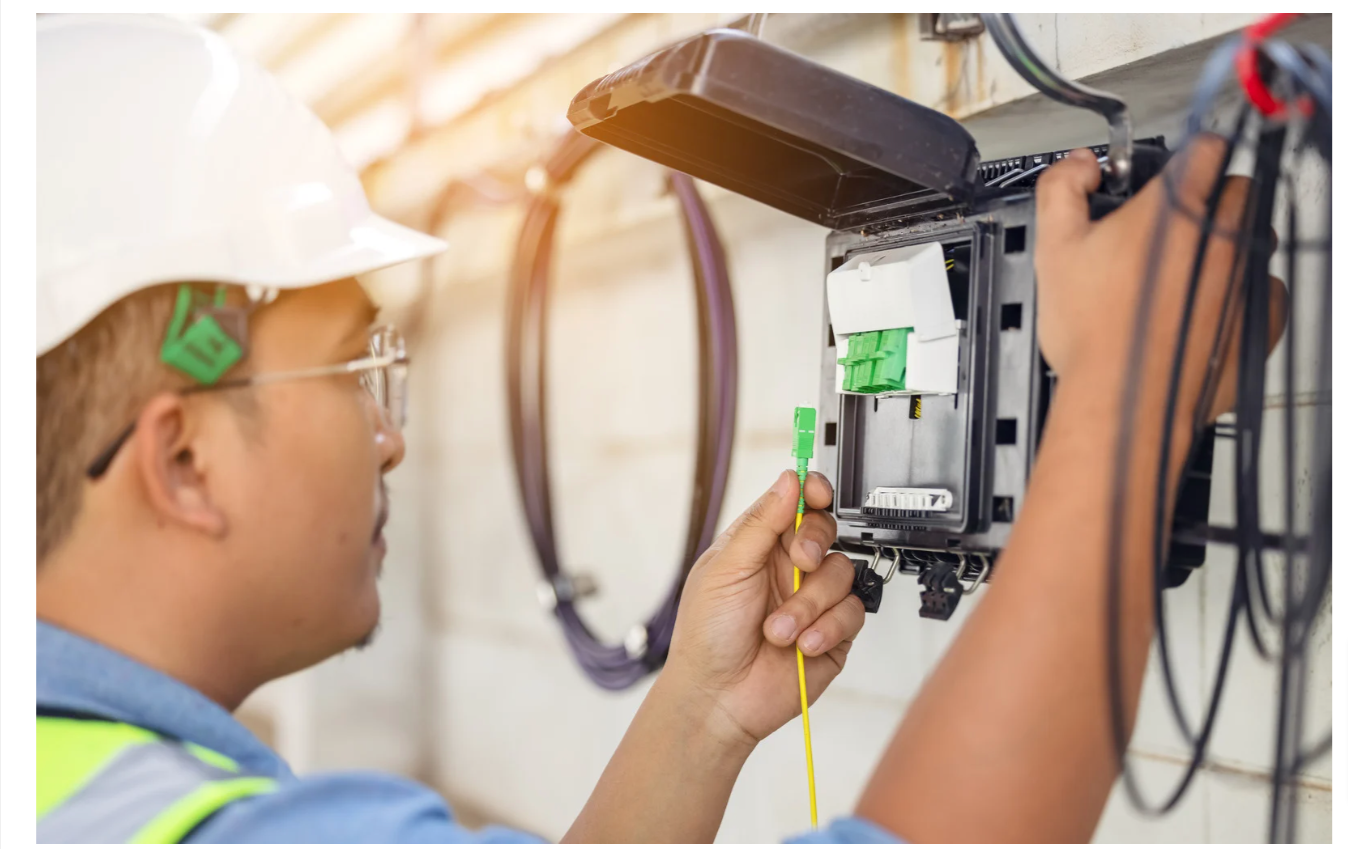
As our region undertakes the ambitious task of expanding broadband infrastructure, it is important to prepare the workforce to meet the needs of this important undertaking. Valley Vision hosted a cross-sector regional advisory to explore the critical intersection between telecommunications and construction pathways, gathering key industry leaders to discuss the future of broadband development in California. The event was facilitated by Trish Kelly, Managing Director overseeing Valley Vision’s Broadband and Digital Equity Impact area, and included industry leaders who shared their perspectives on the future of broadband development.
Karen Eckersley from the California Public Utilities Commission (CPUC) delivered an informative keynote on the state’s ambitious broadband infrastructure investments. She highlighted the CPUC’s efforts to empower tribal nations, public agencies, and new internet service providers with the tools and grants necessary to enhance internet service across California. Eckersley detailed the CPUC’s broadband programs, each tailored with specific rules, eligibility criteria, and supporting maps. Central to her message was the BEAD Program—a landmark $42.45 billion federal investment designed to expand high-speed internet nationwide. She emphasized that workforce development is the linchpin of successful broadband and telecommunications projects, particularly as California embarks on developing 719 miles of infrastructure in Northern California alone through the Statewide Middle Mile and Last Mile Networks.
Valley Vision’s advisory also featured an engaging employer panel, with information from leading telecommunications companies and agencies. Adam Mohler of AT&T, Alex Velazquez of MasTec North America, Ernesto Fermin of the California Department of Transportation, and Kenny Blakeslee of Apex Site Solutions shared their perspectives on recruitment challenges and strategies within both the telecommunications and construction sectors.
Panelists expressed the urgent need for skilled technicians and engineers. AT&T’s Mohler spoke on the growing demand for outside plant engineers and sales representatives, stressing the importance of staying ahead of technological advancements. Velazquez from MasTec North America highlighted their commitment to developing talent in aerial linemen and entry-level technicians to meet infrastructure demands. Fermin from the Department of Transportation emphasized opportunities in electrical engineering and technician inspector roles being vital for telecommunications oversight. Blakeslee of Apex Site Solutions provided insights into the rising need for electrical engineers specializing in fiber infrastructure and fixed wireless networks.
In addition to the employer panel, the advisory highlighted local educational programming connected to this sector.. Ryan Connelly, Cosumnes River College’s (CRC) Construction Program Faculty & Department Chair, showcased CRC’s construction program. Connelly emphasized the necessity of continuous collaboration between educational institutions and industry partners to keep the program aligned with workforce needs. He credited CRC’s strong partnerships with organizations like the Building Industry Association for driving the program’s evolution and success.
The connections and insights shared at this convening demonstrate a need for educational programs and industry partnerships that are responsive to shifts in the labor market. By aligning training and education with market demands, we can equip individuals with the skills necessary to thrive in expanding fields like telecommunications and construction.
Alongside this advisory, Valley Vision’s ongoing initiatives, such as the Connected Capital Area Broadband Consortium are a testament to a steadfast commitment to fostering partnerships that champion digital equity and community development through expanded broadband access. As impact partners unite under Valley Vision’s collaborative efforts, the future of California’s broadband infrastructure looks brighter and more equitable than ever.
Forging Stronger Ties Between Hospital Systems and Education

The Healthcare Summit, held on June 28th at Folsom Lake College in partnership with Valley Vision and Choose Folsom, was a testament to the commitment of top leaders from Kaiser Permanente, Dignity Health/CommonSpirit, Marshall Medical, Sutter Health, and UC Davis Health. This gathering marked a pivotal moment in enhancing the college’s healthcare programs, with a direct focus on addressing the critical needs outlined by local hospital systems. The collaboration of these prominent healthcare providers showcased a unified commitment to developing a strong talent pipeline, a key factor in meeting the growing labor demands of the healthcare industry. Notably, several of these hospitals are expanding into Folsom and beyond, underscoring the urgency of developing a skilled local healthcare workforce.
During the summit, each organization shared distinct insights and priorities, fostering a collaborative discussion to refine Folsom Lake College’s healthcare career technical programs. Kaiser Permanente emphasized the role of training students in the latest healthcare technologies, while Dignity Health unveiled plans to transition to a centralized electronic medical record (EMR) program, illustrating the need for students to be proficient in these systems. Marshall Medical and Sutter Health highlighted the importance of people-centered care and innovation, underlining the necessity for interpersonal skills and critical thinking in the healthcare workforce. UC Davis Health focuses on providing comprehensive support for students, including job shadowing and specialized programs to ensure they are well-prepared for the industry’s demands.
Most employers at the event, including Kaiser Permanente, Dignity Health, Sutter Health, UC Davis Health, and Raley’s, have been a part of the Talent Pipeline Management (TPM) Employer Collaborative. This collaborative, hosted by the Roseville Chamber of Commerce and utilizing the U.S. Chamber of Commerce Foundation’s TPM methodology, focuses on aligning educational outcomes with industry needs to ensure the workforce is equipped with the skills necessary to meet current employer demands. By participating in the TPM Employer Collaborative, these healthcare organizations have demonstrated their dedication to educational providers to resolve challenges in talent acquisition.
Discussions at the summit centered on creating clear pathways for students from education to employment to equip graduates with the necessary skills and certifications to excel in their careers. By addressing certification gaps and aligning job descriptions with the academic curriculum, the hospital systems and Folsom Lake College aim to train a diverse pool of candidates and effectively meet the region’s healthcare needs. The summit also discussed the importance of mentorship programs, clinical placements, and early high-school-level investment to support student growth and professional development.
The collaboration between Folsom Lake College and the healthcare systems is a testimony to the power of partnership in driving educational excellence and workforce readiness. Through this joint effort, these institutions are elevating the quality of healthcare education and ensuring that the future workforce has the skills and competencies to readily meet the healthcare industry’s staffing needs.
Learn more about Valley Vision’s regional industry advisories by clicking here. You can also find information on our most recent Health and Life Sciences workforce advisory on Mental and Behavioral Health Careers by clicking here. Stay updated by watching the newsletter for upcoming advisory information or checking Valley Vision’s events page.
Liz Kilkenny is a Valley Vision Project Coordinator staffing the 21st Century Workforce Impact Area.
Hilary Tellesen is a Valley Vision Senior Project Manager leading the 21st Century Workforce Impact Area.